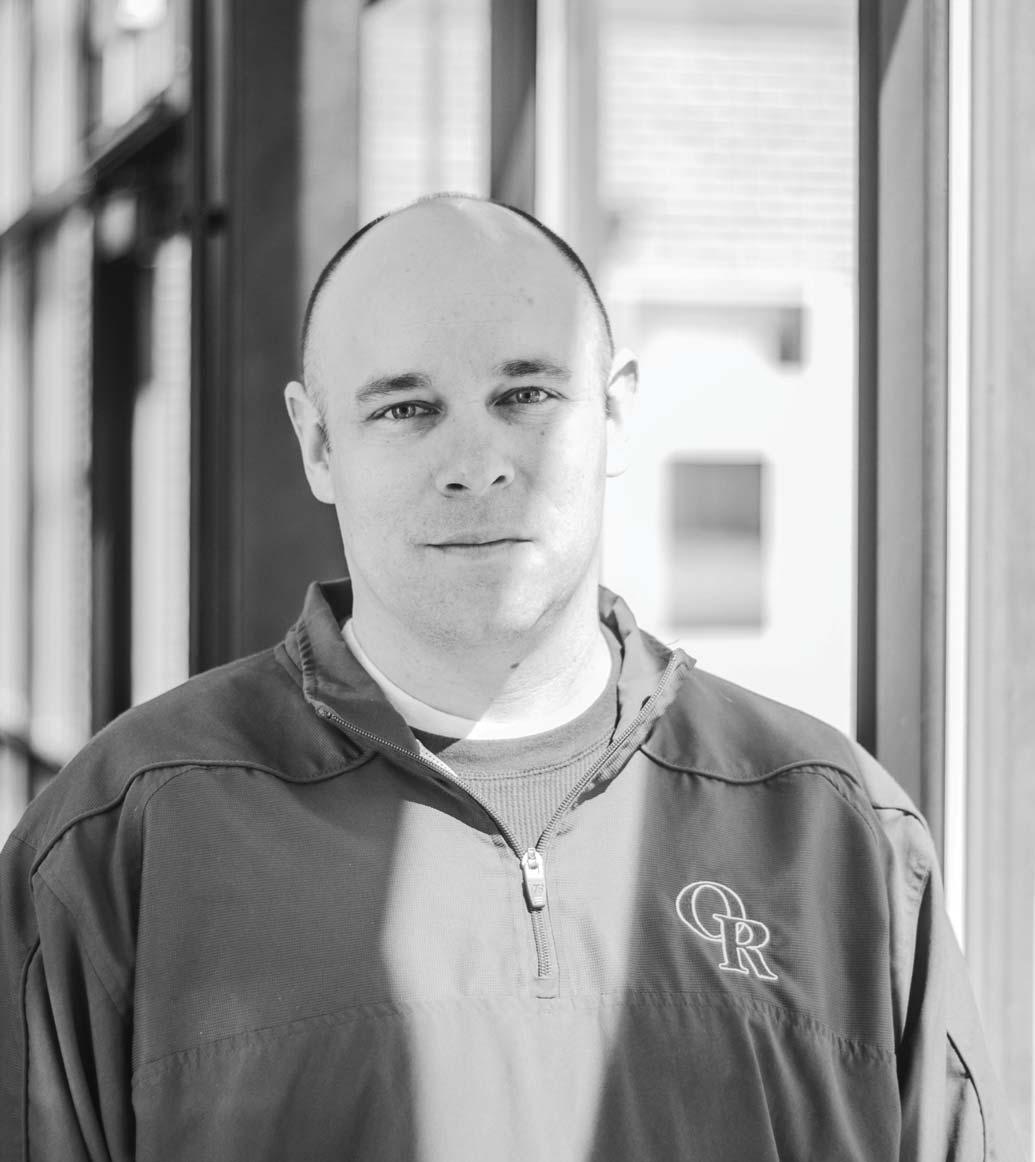

SPORTS The Mighty Erin..............26 Victory Lap......................29 OP-ED Where Am I.................17 Allen.............................18 FEATURES A Life Remembered........9 Know Your Rights..........11 NEWS The Cost of Education......3 The Final Say.....................8 Mouth of the River Issue 4 \\ Oyster River High School’s Newspaper \\ April 8th, 2014 Durham, NH 03824 Wishing Him Well In The Future
Dear MOR Readers, Thanks for picking up issue four of Mouth of the River. You will find a lot of quality content in this issue, including a story on Andy Allen (page 18), an article about the ROTC program, and even more online. Our online presence has been an increasing focus not only throughout this year but especially throughout the past few months. A substantial amount of extra content, unprinted content is being put online, including articles, video, and photography. The mobile version of our website has been designed to work seamlessly and simply with any mobile phone, so feel free to read MOR wherever you may be.

Unlike previous issues, all of the content in the printed version of issue 4 will also be online. Our website now features the entire current issue, as well as extra content exclusive to the website, and past issue archives. When picking up this issue, the first thing you may have noticed is the redesigned masthead on the cover. This change was a small contribution to the revamping of our aesthetic presence, which you may see more of in the future. The decision was made to change our masthead to what we believe represents a more modern and professional media outlet.
One of our goals for this issue was to bring our already existing online presence to an even more improved collection of content from MOR. We hope our print version and online version can blend seamlessly and be accessible at whatever time or place you wish to read MOR. On our website, we have also added the most recent episode or ORTV, which features a piece on MOR. We would like to thank the folks at ORTV and we hope the piece can provide more insight into the background work of Mouth of The River.
You may notice QR Codes inside this issue of Mouth of the River. These square, black codes act as a link to special articles that were not featured in the actual newspaper. To scan them, download an app called “QR Reader” on your iOS or Android device. Upon scanning, you will be directed to the respected article you scanned. This makes it easier to access the content that is important for our community without wasting as much paper.


With the numerous improvements that this issue brings to our readers we hope you enjoy Mouth of The River issue 4, whether it is the print or online version.

- Mouth of The River Media Managers, Sam Colby and James Tuliano.

2 Issue Four April 8, 2014 NEWS DEPT. 3: The Cost of Education 4: Channel 95 5: Reppin’ the School Board 6: Reppin’ the School Board (Cont.) 7: Show Your Wild Side 8:The Final Say What’s in this issue? FEATURES DEPT. 9: A Life Remembered 10:A Salute to Our Soldiers 11: Know Your Rights 12: High Stress, No Pay- MOR 13: Know Your Rights (Cont.) 14: A Salute to Our Soldiers (Cont.) 15: A Salute to Our Soldiers (Cont.) 16: What Not to Not Wear OPINION-EDITORIAL DEPT. 17: Where Am I? 18: Allen 19: Allen (Cont.) 20: Problems with America’s Public Schools 21: Problems with America’s Public Schools (Cont.) 22: Ain’t Nobody Messing With My Clique 23: Ain’t Nobody Messing With My Clique (Cont.) 24: The Expansion of Music Genres 25: The Expansion of Music Genres (Cont.) SPORTS DEPT. 26: The Mighty Erin 27:New Coach, New Hope 28:A Different Kind of Field Day 29:Victory Lap 30:Don’t Let it Get to Your Head 31:Don’t Let it Get to Your Head (Cont.) 32: Boys Lacrosse Has A Bahl Visit us online at mornewspaper.com for more exclusive articles! Have any questions about Snowdays? Get them answered here online!
Sadie Moore News Editor

The Cost of Education The 2014-2015 ORCSD Budget
In 2013, it cost $16,553.23 on average per pupil between preschool and 12th grade in the Oyster River School District according to the New Hampshire Department of Education. Other Schools in the state range between $11,000 and
$21,000. The voters decided the amount for the coming school year in a vote on March 11th, 2014. The proposed budget, and all warrant articles concerning the budget were passed by the voters. The budget for the year will be $39,325,985 for everything in the district.
Article 3 was regarding the salaries for teachers. Because teachers were willing to accept a less expensive insurance plan and pay more of a co-pay and more for medicines, it saved the district $295,000. This made it so the 1%-2% salary increase over the next three years only increased the budget by .08%. “This is going to affect a lot of people, especially ones on a lot of medicine, this is negative for any teacher who needs to see a doctor or be on medicine. The positive is that we are able to get some sort of a raise by reducing that part of the budget,” says world language teacher Stephen Lord. This contract change was made because it had to mirror the higher “cost of living,” explains School Board Chair Maria Barth. “We have really good teachers so the voters approving their contract means we are likely to see them stay and attract new teachers when we need them,” says Superintendent of Oyster River Schools James Morse.
Article 4 was for a cafeteria for Moharimet. Right now, PE classes have to stop midday for lunch to be served, making scheduling difficult and increasing workloads for staff due to having to constantly rearrange the room. Oyster River received $688,000 from a lawsuit against the Local Government Center, $188,000 was given back to employees and the rest is proposed for use for the cafeteria. On top of this they will need $45,000 from taxpayers. This article is important due to “equity” Barth says. Every other school in the district had separate rooms for PE, lunch, and extra space.

Article 5 asked for voters’ approval to al-
low the school board to decide how to spend extra money from the Facilities Capital Reserve Fund which contains $98,289 and they would like to put it towards additional costs for the Moharimet Cafeteria. The vote on this matter was “a little less universal, but still pretty strong," high school principal Todd Allen explains.
Article 6 regards the tuition agreement with the Barrington School District. This contract charges a $14,000 tuition fee that can automatically raise if the cost of operating at ORHS does.
As stated above it costs the school $16,553.23 on average per student preK-12. This agreement includes goals to increase the number of Barrington students by 55 in the next five years.
Since the Barrington voters voted this article in, they are agreeing that if they don’t meet the five year goal of 125 students they will pay 95% of what Oyster River would have gotten if they had reached the goal. This had to be approved by the state department of education and both school boards/voters. “Any kind of tuition type agreement [the state board of education] has to approve because it’s changing the definition of where kids
2014 student school board representative Pieter Zwart. “The tuition agreement will allow ORHS to keep programs important the high school and offer taxpayer relief,” Morse explains. "Barrington students currently bring into ORCSD about $900,000. As more Barrington students enroll the tuition money will increase. Because this is a ten year agreement it allows OR to confidently project tuition revenue," he continues. He calls this a "win-win" situation for taxpayers and students because they can keep important funding.
Article 7 asks for approval for an operating budget of $39,325,985. If this wasn’t accepted it would drop to a default budget of $37,511,593. “The proposed budget is very responsible and provides for a number of new things in the district. It adds a k-12 stringed orchestra teacher, a math tutor at the high school and resources to support our work to align the curriculum with the common core standards,” says Allen. Morse also added how great it will be to have the strings program for students who have been wanting it. The vote resulted in 989 votes of “yes” to pass the article, and 512 votes of “no” to not pass it. This vote was the closest one of all the budget articles voted on. “The budget increase is below inflation so it represents a very conservative increase reflecting the financial times we live in as a school community, state and nation,” Morse explains. “The budget affects every student, for example your team getting new jerseys
would have to go to school,” says Allen. The maximum number of Barrington students is 200 being increased at 20% per year. “As far as high schoolers are concerned the article regarding the tuition agreement was probably the most important,” explains 2013-
or paying for you to travel to away games. It pays for the maintenance of the building and the internet connection. (continued on page 4)
Follow Us on Twitter @MORnewspaper for more content.
3 Issue Four April 8, 2014 News
“The budget affects every student, for example your team getting new jerseys or paying for you to travel to away games. It pays for the maintenance of the building and the internet connection. Those are just a few things but it is things that are important to students.”
-Pieter Zwart
Voting at the ORHS Durham voting location.
Those are just a few things but it is things that are important to students,” Zwart explains.

The school board comes up with and proposes all of these articles at what is called a deliberative session. This is where they explain them and voters have the chance to discuss them and change them. The deliberative session was held on February 7th, 2014. Making changes to the articles or proposing something else is called an amendment. “So if a citizen would like to change something the deliberative is where they would do it. Up until the deliberative it’s all the board’s decision. Until it becomes the warrant, the community doesn't get a say,” Allen explains.
At the deliberative session there is a vote and if the presented article or amendment is passed then it ends up on the ballot. All five presented warrants were passed and all four amendments that would have increased the budget, failed. “Most of the votes were pretty obvious,” says High School principal Todd Allen.
The school board cut two positions at
the high school: a building aide, and a part-time world language teacher. The world language teacher vote was “a close one that the moderator had to call for a second vote,” says Allen. Two amendments were made to restore these positions, but failed. These positions were cut because of the “class size policy” and because they could be “cut without a huge impact to the school,” Barth explains.
“It will affect [the foreign language department] because we will have larger classes and research has said that the best size for a foreign language class is 12-16 students and this [reduction] will make that a little higher, this will make it harder for us to make
all the offerings that we are trying to make including AP and 5 level courses because of the higher numbers,” Lord explains.
The amendment for a School Resource officer at the elementary schools also failed. The last amendment, which was to make all-day kindergarten at Mast Way for next year, failed.
Channel 95
A New Station for Oyster River
“Channel 95 is awesome. It’s cool we have our own channel, and that I can be a part of it,” says junior Shelby Beane. For the Oyster River school district, getting channel 95 is a new step towards the future of our schools. “This has been 5 years in the making,” explains Video Production teacher Kathleen Young. “They told me every year to ‘get ready its coming up’, so it’s finally good to see something come from it.”
Meyerson Guest News Writer
DCAT, the local TV station for Durham (usually Channel 22) serves our community, as well as the surrounding towns. DCAT or Channel 22 usually airs school board meetings, sporting events, as well as ORTV episodes. “But with having a channel all to ourselves, we can air whatever we want, whenever we want,” added Young. “Also being able to show the community what we do in our classes, is great, something more can be shown.” DCAT is run by Comcast, which is the cable provider for our area.
“Most students don’t really know that we have a new station,” says Beane. “It’s really fun and exciting to be able to show the rest of
the school, and the community what our students are capable of.” But for ORHS students, the idea of having a station is new. “I think it’s going to open up a lot for the school and the district,” says senior Chris Buchanan. “It’s really cool.”

For those who are in town, or even to alumni, channel 95 is something new, and it’s a way to show the community what students can do. “I don’t really know what I’d want to see on it, I think it’d be cool to

see what other alumni were doing if it was something cool,” says 2012 Oyster River graduate Katie Burzon.
Since the station is running 24/7 there’s a daily theme; Mondays are focused on Mast Way and Moharimet, Tuesdays are for the Middle School, Wednesdays are for politics and school board, Thursday is about the High School, and Fridays are for sports.
Follow Us on Twitter @MORnewspaper for more content.
4 Issue Four April 8, 2014 News
“The tuition agreement will allow ORHS to keep programs important the the high school and offer taxpayer relief.”
-Superintendent James Morse
Voting Booths.
Gabi
Junior Shelby Beane works on editing content for Channel 95.
The cost of Education, Continued From
Page 3
Reppin’ the School Board New School Board Members and Representative
Every month, members of the school board get together to discuss ways to improve the Oyster River school district and potential changes to the school budget. A voted in group of seven adults and one chosen student representative lead the discussion which is aired on the local channel in front of a live audience of around 50 residents of the district.
Tuliano Guest News Writer
These meetings provide a sense of organization to the district in terms of changes and budget cuts. These meetings are the ones that decide whether or not Newmarket comes to Oyster River (see page 8), if we should get iPads for the high school, if we should expand the Moharimet cafeteria, and countless other topics. These meetings are not only important for the well being of students, but also for parents and residents of the community to stay informed with what is happening within the school community.
This year, two new school board members were elected: Sarah Farwell and Denise Day.
Farwell has been following Oyster River politics for three years. She has been “an active school volunteer, a PTO board member and has participated in 3 district hiring committees, the future search committee and the elementary balancing enrollment committee,” she explains. Farwell hopes joining the school board will add a fresh perspective to the meetings.
“I wanted to become a school board member because as an educator, an involved parent and a taxpayer I think that I have a valuable perspective when it comes to our schools,” says Farwell.
Farwell hopes to “strengthen the education provided to Oyster River Students”, and believes the school board accomplishes this by putting new policies forward.


The other new school board member, Denise Day, has attended school board meetings for three years. Now that she is an official member of the school board, she will actively participate in the discussions.
“I decided to run for a position on the [school] board this year after being encouraged by several people,” Day stated. “I hope that my knowledge and experience can complement the skills of those already on the board.”
Day says her primary goal is to support the students of the district in the best way she can, while still being mindful of tax pay-
er dollars.
“We can’t say yes to everything, but hopefully we can say yes to those things that really make a difference for our students,” Day says.
Day and Farwell will start on the board during the next school year.
Every year, we also elect one high school student to represent the student body at the school board meetings. Last year, class of 2013’s valedictorian John Parsons was the student representative for the school board.
Parsons did his best to get his class to be involved in the meetings, but only a few wanted their voice to be heard.

“I asked students about a lot of the issues and tried to establish some social media outlets through which other students could voice their opinions and concerns,” explains Parsons. “But few students really took advantage of it.”
Despite his young age and student status, Parsons felt he was treated as an equal to the other members.
“I had an unofficial vote and I was by and large treated as an equal by the school board members. We worked really well together and I miss being on the board!” he explains.
Pieter Zwart, a junior at Oyster River High School, is this year’s school board representative. He wanted to become the
student representative because he thought “it would be interesting to be a part of the decision-making progress for the school district.”
Zwart enjoyed being part of the school board meetings. “I think that the board members treated me with respect and kindness and they were always happy to hear what I had to say, so I felt very comfortable
speaking my mind when I felt that I needed to.” ( Continued on page 6).
Issue Four April 8, 2014 5 News Visit us
for more exclusive articles!
online at mornewspaper.com
“We can’t say yes to everything, but hopefully we can say yes to those things that really make a difference for our students.”
- Denise Day
James
Maegan Doody, the next school board representative.
Advertisement for the winning members, Sarah Farwell and Denise Day, as it appeared on orcsdcleanslate.blogspot.com.
Zwart believes he did a good job representing the students interests by “providing the board with data from surveys on issues concerning the school such as the football program and the tuitioning issue.” Zwart “was always happy to talk to someone about what was currently going on with the board.”
Veteran school board member Allan Howland says that the student representative is an important job. He has been on the school board for two years, and has been the liaison to the advisory budget committee, member of the negotiating team, and members of the communications committee.
“The student rep is the voice of the student body and is able to provide ideas and opinions during board discussions,” says Howland. “It is important because most of the board does not currently have children in the schools and we have limited opportunities to spend time in classrooms.”
Like Parsons and Zwart, Howland believes that students should attend the meetings as well.
“I think there are two reasons for students to attend meetings. First it is important to understand what the school board does. Our actions have an impact on students’ experience and they should understand how our processes work,” states Howland. “Second, It is our job to listen to all of the stakeholders in the community. Students are an important part of that community and need to provide us with information that helps us make good decisions.”
The next person to continue the legacy is Maegan Doody, a sophomore at Oyster River High School.
Doody participates in many sports and clubs. She won first place in the state this year for running on the cross country team, and also won first place in the 1000m Track & Field championship (Division II). For being only a sophomore,
You can watch every School Board meeting at http://youtube.com/orcsdvideo.

many would say she is very involved in her school. Starting next year, she will be the student representative for the school board.
“I wanted to be the student representative for the school board because I thought that it would be a great opportunity to get involved and voice my opinions along with the students’,” explains Doody. “As a senate member, we often discuss current issues and things that we want to see changed or improved. A lot of the things we come up with are primarily under the control of the school board. For example, changing the start times or the addition of a new athletic facility. It will be fulfilling for me to be able to be a part of making these changes actually happen and putting them into effect.”
Doody has many ideas on how to get other students to become more involved in the school board. She plans on putting a box in the office, where students can fill out a form and insert said form in the box for Doody to read and bring up at the next school board meeting.
One of the first things Doody wants to discuss with the school board is how to re-incorporate Advisory (sometimes called Focus) into Oyster River’s schedule, as the half-hour time period in which students would normally go to their Advisory teacher has been replaced with a break. Advisory was a period where students would meet with a certain teacher and could get guidance for things such as
completing their digital portfolio, things related to graduation, and they could write future letters to themselves. Some students thought it was a waste of time, so it was removed.
“Over the next few weeks, members of the senate will be visiting three other high schools with successful advisories to observe and gather some new ideas to keep in mind while figuring out what our school wants to do for advisory,” states Doody. “I will bring forward our ideas to the school board and get further insight on this topic.”
Doody also would like to bring up other issues with the school board, such as weighted/un-weighted grades, the possibility of a new athletic facility and track, and later start times. She believes many students and herself would like to hear more opinions on these matters.
Evan Gordon, a sophomore at Oyster River High School, has known Doody since elementary school. Because he knows Doody so well, he may know better than anybody else the potential behind the young leader.
“I think Maegan will perform very well as the student representative. She understands what a big responsibility she is taking on and is planning on doing the best job she can,” explains Gordon. “Maegan puts effort and thought into everything she does, and on top of that she is very well spoken, so I’m confident that she will represent the student body very well.”
Zwart gives one last piece of advice for Doody’s new important responsibility: “First of all I want to wish her good luck this year, It might not be easy at first but you’ll learn an immense amount from it. Make sure to think critically of everything you hear, and try to formulate your own opinions on issues; don’t just agree with someone else because you think they might be right. Your role is a valuable one and you always need to remember to respect it.”
Issue Four April 8, 2014 6 News Visit us online at mornewspaper.com for more exclusive articles!
“First of all I want to wish her good luck this year, It might not be easy at first but you’ll learn an immense amount from it. Make sure to think critically of everything you hear, and try to formulate your own opinions on issues; don’t just agree with someone else because you think they might be right. Your role is a valuable one and you always need to remember to respect it.”
- Pieter Zwart
Page 5
Reppin’ the School Board,
Continued From
Show Your Wild Side
The Wild Card Dance
Many upperclassmen may remember the controversial yet highly attended dances in ORHS’s past.

On March 13th there was a wild card dance in the multi-purpose room at Oyster River High School. About 80 students went and roughly $300 was raised for the senior class, after paying for the DJ and glow sticks. The dance was advertised as "the only dance of the year."
 Moore News Editor
Moore News Editor
The theme was wild card meaning you are meant to wear something crazy and do whatever you want to do as a "wild card.” “It was awesome, I had a good time dancing, we ended up having a much bigger turn out and no one caused any trouble,” says senior class vice president Ryan Kerrigan.
“It was mainly upperclassman there, I would say mostly juniors,” Kerrigan says. “I think underclassmen will want to go because they have never had the experience of a dance,” explains senior class advisor Heather Healy. Current sophomores only had one dance experience before the new policy which was homecoming of their freshman year. “I was really excited for dances but when we got to high school everyone stopped going so they really weren’t fun anymore,” says sophomore Sam Walk-

er. There were more freshman than there were sophomores at the dance, “since some of us [sophomores] went to dances last year and they didn’t really work out, we didn’t want to go this year; Whereas with freshman they had no negative connotations with dances,” Walker continues. Kerrigan believes fewer underclassmen go due to being intimidated and freshman Felicia Ayer agrees, “It’s kind of scary being a freshman and not having much experience in the high school world,” she says. Although she went, most of her friends didn’t. Kerrigan urges underclassmen to go to as many school-sponsored events as possible to “get the high school experience.”
Many students had been persuading friends to go the week leading up to the dance. People like junior Grace Tauriello said “it will only be fun if people actually go.” "It's going to be awesome everyone
says Junior Ellie Lewis. About 150 students went to the “80’s Sadie’s” dance fundraiser for the senior class. This is a big change from the 400 plus students in past years.
"Since the new policy nobody really went to dances, but the people who go this year are just trying to have some fun and raise money," says Tauriello. The policy Tauriello mentioned is called "face to face with space.” It was established last year to stop "grinding" at dances. The new policy requires students to be face to face and leave space in between them. This was very controversial among students some thought it was much needed and some rebelled against it. “It [the policy] provides for a more comfortable but less fun environment,” says Junior Nyles Lawson. The policy was blamed for the scarcity of students at the dances that followed. Kerrigan agreed saying it “scared some away.” Most seemed less concerned about it than last year including Ayer, “since I had no experience with dances before the policy I wasn’t really worried about it I just thought it would be a good opportunity to have some fun.”
should go," senior Cooper Smith said before the dance.
Last school year there were three dances total: homecoming, Sadie’s, and Prom. “Not many people really went to dances last year unless it was raising money for their class,”
Many have been asking about another dance including Tauriello, “it was really fun, I’d go again,” she says. It is possible that with after the success of the first dance, more would attend a second. “I would love to go [to another dance] because now I know what to expect and I would know what to tell my friends so they would go too,” Ayer says. Kerrigan explains “we might see if we can squeeze in another but we would have to have a big discussion about that.”
Follow Us on Twitter @MORnewspaper for more content.
Issue Four April 8, 2014 7 News
“It was awesome, I had a good time dancing, we ended up having a much bigger turn out and no one caused any trouble.”
-Ryan Kerrigan
Students at the Dance. (Photo Credit: Matt Segil)
Griffin Sinclair-Wingate DJing the dance. (Photo Credit: Matt Segil)
Sadie
the final say A Recap on the Tuition Deal, and the Final Decision
On Wednesday, December 18th the Oyster River Cooperative School District (ORCSD) made the decision everyone was waiting for. After a two year long deb ate on who should get the opportunity to send their students to Oyster River High School (ORHS) (Newmarket, Barrington, or Deerfield) it was then narrowed down to Newmarket or Barrington. Out of those two choices, Barrington came out as the final decision for Oyster River. But what was the reasoning behind this choice?
Weiker News Writer
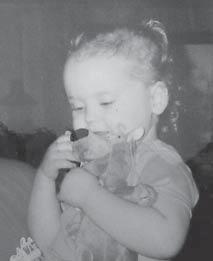
Both schools gave very good reasoning for why they should be chosen. Barrington had already been tuitioning various amounts of students for a short while. The issue with this was every year there isn’t a set amount of students, causing problems for Oyster River with classroom numbers, and extracurricular activities.

Newmarket had been looking into tuitioning their students for some time due to their high school/middle school building conditions. They have been pinned for closure by 2015 due to health and safety code violations. This has caused them to look into two options: tuition their students, or build a new high school.
Oyster River had a plan for what it was looking for. There were certain requirements that had to be reached and kept in mind when looking at the schools presented. This led to the choice that was made. Principal Todd Allen informed that Oyster River High School’s “numbers of enrolled students have dropped significantly over the past few years. This is taking away from the students because decreased enrolment numbers means we have to take away classes, extra-curricular activities, and other opportunities away due to not enough participants. We can’t afford a class that only two or three students want to take.” Allen went on to explain why this certain situation is the reason for tuitioning, saying that by increasing the number of students to full capacity along
with the tuitioning fee will allow the funds and the number of participants for those extra-curricular things and other classes. It will also give major tax breaks for the residents.
Oyster River wasn’t Barrington’s only outlet in this tuitioning issue. Barrington had applied to multiple high schools, Oyster River, Dover, Somersworth, and CoeBrown in hopes to get more options to choose from for the students to have based on where a majority of the students live.
On December 4th, 2013 it was brought to the ORCSD school board that they had a student “bubble” in the 5th grade. What this means is that the 5th grade student numbers are quite large, giving the enrollment number a huge jump by the time they hit the High School. Newmarket would have to tuition around 344 students, which would be too many kids for Oyster River High School’s capacity during this “bubble”. This new information ultimately led to the Barrington decision, ending the two year long discussion.
So what of Newmarket? On March 11th the town voted on article 1, which was the 45 million dollar new school rebuild plan along with other important articles. To the “new school” supporters’ disappointment, the article did not pass;

losing the vote 1,605 to 1,571. The voters did opt to give the school 500,000 dollars to renovate anything that needs to be fixed in order to keep the school up and running. During the follow-up school board meeting, Newmarket High School superintendent Jamie Hayes mentioned that “there is no long term plan for the school as of yet, that part is currently being put together by the school board.” Hayes then went on to say that the renovations will have to do for now, and that he hopes a new school will be approved by the town sometime in the future. To get more statistics on the votes for Oyster River, see page 3 The Cost of Education.
Newmarket High School in 2014.
Follow Us on Twitter @MORnewspaper for more content.
Issue Four April 8, 2014 8 News
“There is no long term plan for the school as of yet, that part is currently being put together by the school board.”
- Jamie Hayes, Newmarket Superintendent
Kirsten
Voting check in tables at Oyster River High School.
A Life Remembered
Marina Slavin, A Beloved Friend
“With her contagious laugh she turned any sour day into a great one,” explained Jenny Mistretta, friend and teammate of Marina Slavin.
Slavin, a member of the Oyster River High School class of 2011, unexpectedly passed away in her sleep on December 5th of 2013. Slavin was 20 years old, a friend to everyone she met, and enjoyed her friends, family, and running.
Alex Morrell Guest Features Writer
Slavin’s sister, Siobhán, reflects on her sister, saying, “there’s so much about her that I loved. She had such a strong face. When I would go to her with questions, she always had a way of making it make sense. She was just amazing... I don’t know how she did it.”
“Marina was extremely selfless. She was almost un-humanly selfless,” says Eliza Balch, senior at ORHS and fellow cross country runner.

Slavin’s dear friend Kristen Laaman describes Slavin saying, “Marina was more full
Many know Slavin as the girl who ran barefoot through the streets of Durham. Slavin was an avid runner all her life and ran for the middle and high school cross country teams, winning the N.H. Division II State Championship in 2010. The cross country team was a huge part of Slavin’s high school life and, “even though she would deny it, a huge part of the energy [of the 2011 cross country season] was because of her,” explains Balch. “The team always has an extremely supportive, loving, and accepting environment and [Marina] went above and beyond to make sure she was the best captain she could be during her senior year,” Balch added.

“Marina was always barefoot, as you know,” explains ORHS English teacher Kara Sullivan, “I always remember her on beautiful spring days walking barefoot to Breaking New Grounds.” Slavin was part of Sullivan’s senior English class, which would walk down to BNG for class discussions.
Slavin ran for the track and cross country teams at ORHS and spent her freshman year at the University of New Hampshire on the cross county team. Transferring to Houghton College in Houghton NY, Slavin hoped for a more close knit community.

Slavin competing in a N.H.I.A.A. cross county championship. (Photo Credit: Siobhán Slavin)
the people, the language, and the landscape. I think it shaped her into an even better person than she was before. She had found her calling,” explains Siobhán. On March 19th of this year, Slavin’s youngest sister Danielle also shaved her head for St. Baldrick’s in memory of Slavin.
Slavin also very much enjoyed doing things for others.
of life than anyone I know. She loved very openly and freely. She was the kind of person who you never had to worry whether she actually cared about you or not.” Laaman was homeschooled, however she ran with the Oyster River cross country team and visited classes at least once a year with Marina.
Siobhán added that, “Marina was a very natural person and she didn’t give in to the pressures of society. She didn’t shave, she didn’t use conditioner because it wasn’t natural, and she also never swore or made inappropriate jokes. And she lived by that, which I know I could never do, so its incredible to me that she was able to do that all the time. But it’s what she believed in.”
On January 1st 2013, Slavin shaved her head as part of a fundraiser for St. Baldrick’s, a childhood cancer charity. In 2011, Slavin went to Peru as part of a service trip and training for running. “She fell in love with
Along with her bubbly personality and passion for running, Slavin was a strong student academically. Every year, the faculty at ORHS meet, and decide if there is someone in the senior class who could qualify for the special faculty award. The award is not given each year, as it is really up to the faculty to determine if there was a student who deserves special all around recognition.
“Often names of students are suggested but there is always a discussion as to why that person should deserve the award. (Continued on page 10)
“I’ll remember her face shining like the sun. I’ll think of her whenever I see the color orange, whenever I go running, whenever it rains. Twenty years is such a brief time to be on this earth. People are often romanticized after they die, but even in life, she always seemed surreal, too pure for the world. Marina is the brightest soul I know. She’s always been an angel; we only borrowed her. But thanks to that borrowed time, she’ll be here forever in the people she loves, and in the people who love her.”
-Jenny Parker
Issue Four April 8, 2014 9 Features
at
for more exclusive
Visit us online
mornewspaper.com
articles!
Slavin and her parents Maura and Michael at her high school graduation in 2011. (Photo Credit: Siobhán Slavin)
Remembered, Continued From Page 9
goes to a few people in each senior class that demonstrated four years of excellence in English.
“She was also quirky,” says Siobhán. “I remember she went through a lot of phases. Once, she memorized 200 digits of pi and would outline the driveway by writing them in sidewalk chalk.” Another time, Slavin became obsessed with squirrels and, for a while,
everyday at 2 o’clock she would throw peanuts out her window and several squirrels would come running. She also went through a phase where she made 1,000 little paper cranes and another time she memorized the entire table of the elements,
Jenny Parker, a teammate of Slavin’s, reflects on her friend’s wonderful personality: “She’ll never be more than twenty, but she fit more kindness and spirit into twenty years than anyone else I know could fit into eighty.”
Slavin along with her three sisters. From left to right: Danielle, Eileen, Slavin, and Siobhán. (Photo Credit: Siobhán Slavin)

The year Marina’s name was brought up... I’ve never really experienced anything like that. You could sort of hear the entire room say ‘yes’... There was no doubt,” explains Sullivan. Slavin not only received the special faculty award but also the English award her senior year. The English award
“Most importantly I remember how Marina made me feel, she made it seem like everything I did could make her happy. Whether I was wearing red or yellow she would always try to convince me I was wearing orange. Orange is her favorite color. Marina lived the color orange with her contagiously radiant smile. She lived orange with her god-given running speed. Marina lived orange with her warm hugs, embracing anyone who would allow it.”
-Serena Pape
A Salute To Our Soldiers Entering the Military After High School
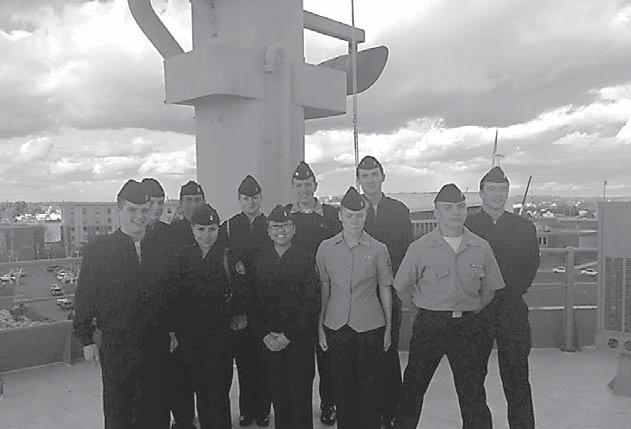

Turn on the news and there’s no way to avoid the information on rising death tolls. The internet paints a picture of bleak, cragged mountains and deserts torn apart by years of war. The United States spends over 600 billion dollars on defense every year, money that many think could be better spent. The men and women of the military put their lives on the line every day, yet brave civilians continue to enlist.
Oakes Features Writer
Each year, millions of high school seniors head off to four-year, two-year, or community colleges. It’s the norm for most, and the expectation of many families in the New Hampshire Seacoast. There are, however, a select few who decide to join the military right out of high school. At only eighteen years old, these recent graduates are trusted into an unknown world with several strangers, who over the next few months will become their closest friends.
Ryan Kerrigan, a senior at ORHS, is applying for a Reserve Officers’ Training Corps (ROTC) scholarship at the University of New Hampshire. If he doesn’t get it, he says he will enroll in the program anyways.
ROTC is a course that trains students in college to become officers in the Armed Forces. “It was a culmination,” says Kerrigan, referring to his desire to join the military. “My grandpa was in the Navy for 25 years as an officer, so he is definitely a role model. It was in middle school [when I knew I wanted to join].”
Kerrigan has always thought he would make a
good soldier. “I’ve lost a lot of weight recently and I want to go into a profession that puts my mind and my body to the test. It is also a great financial choice,” he explains. Kerrigan points out a key selling point the military has for people exiting high school. As the price of college explodes, the military can afford to pay some or all of the tuition for students.
Jason Alphonse, a friend of Kerrigan’s, has also decided to join the military in college. (Continued on page 14)
Issue Four April 8, 2014 10
Features
Visit us online at mornewspaper.com for more exclusive articles! A Life
“The military is a form of motivation in itself. You hold yourself to a higher standard because the military holds you to one as well.”
-Jason Alphonse
Trevor
Murphy and her JROTC group visit the Coast Guard Station.
(Photo Credit: Mercedes Murphy)
Know Your Rights
The Top 4 Constitutional Rights
Pop Quiz: If Mr. Allen, or any other staff/administrator, walked up to you and demanded to search your personal belongings, do you have the Constitutional right to refuse them?
Students Should Know
outside of school, the Constitution protects the rights of everyone. The amount of Constitutional protection an individual receives is completely dependent on their age.
tioned. Such rights which Hawkes further expanded on included the 1st, 4th, 5th and 6th amendments.
Alyssa Bangrazi Features Editor
Students’ rights differ from when they are in school to when they aren’t. (For more information on this, and the first amendment, check out Sam Colby’s article, The First Amendment, at www.mornewspaper.com). “Generally speaking, the Constitution applies equally to everyone, regardless of race, religion, or any other factor. However, because of their age, [minors] are in a special category for certain legal purposes,” explained New Hampshire state attorney, Randy Hawkes. However,
“Right now, if you are over 17 years old and you commit a crime, you are currently treated as an adult. If you are under 17 and commit the same crime, you are treated as a juvenile delinquent,” Hawkes shared. He stated that in January, however, the House of Representatives passed a bill to raise the age where one can be tried as an adult from 17 to 18. If passed by the Senate and signed by the governor, almost all high school students would be considered minors and treated as juveniles.
“Generally speaking, the Constitution applies equally to everyone, regardless of race, religion, or any other factor. However, because of their age, [minors] are in a special category for certain legal purposes,”
-Randy Hawkes
Constitutional Rights You Should Know
1st Amendment: “Congress shall make no law respecting an establishment of religion, or prohibiting the free exercise thereof; or abridging the freedom of speech, or of the press; or the right of the people peaceably to assemble, and to petition the government for a redress of grievances.”
Sophomore Jewelia Durant believes that the age of conviction is 17 instead of 18 because, “17 year olds can still do dangerous stuff too; and if they do it, they deserve the be tried as an adult.” If it were in the case of, say, a 14 year old committing murder they would be tried as an adult, “just because of the brutality of the crime,” Durant said.
4th Amendment: “The right of the people to be secure in their persons, houses, papers, and effects, against unreasonable searches and seizures, shall not be violated, and no warrants shall issue, but upon probable cause, supported by oath or affirmation, and particularly describing the place to be searched, and the persons or things to be seized.”
5th Amendment: “No person shall be held to answer for a capital, or otherwise infamous crime, unless on a presentment or indictment of a grand jury, except in cases arising in the land or naval forces, or in the militia, when in actual service in time of war or public danger; nor shall any person be subject for the same offense to be twice put in jeopardy of life or limb; nor shall be compelled in any criminal case to be a witness against himself, nor be deprived of life, liberty, or property, without due process of law; nor shall private property be taken for public use, without just compensation.”
6th Amendment: “In all criminal prosecutions, the accused shall enjoy the right to a speedy and public trial, by an impartial jury of the state and district wherein the crime shall have been committed, which district shall have been previously ascertained by law, and to be informed of the nature and cause of the accusation; to be confronted with the witnesses against him; to have compulsory process for obtaining witnesses in his favor, and to have the assistance of counsel for his defense.”
When asked what Hawkes believed to be the best advice to give to a student, he suggested that students should think before they act in order to avoid a bad situation in the first place. His second piece of advice was to become familiar with your rights and to know to what extent you can exercise them. “The first ten amendments to the United States Constitution are known as ‘The Bill of Rights’. That’s a good place to start for students interested in learning more about ‘exercising their rights,’” he men-
In answer to the question I asked earlier, you have no right to deny administration and/or a staff member if asked to have your personal belongings searched. The 4th amendment disallows illegal searches and seizures on an individual without proper cause and a warrant. Under in loco parentis, which means in place of parent, while a student is in school, this right differs when a student is not in school. “There are several Supreme Court cases that have happened that have granted both teachers and administrators parental rights over children [to search their belongings],” explained social studies teacher, Brian Zottoli. The reasoning behind these rulings are for the safety of the students and the staff.
He also explained that when a student has stuff in their lockers, they are technically borrowing the school’s property; therefore the school has every right to search what is theirs. “I think that it’s important for kids to know that when they’re in school, we have parental rights and can [search their belongings]. I think that students often think that if it’s their personal [item] that no one can have access to it, and that’s just not accurate based on Supreme Court,” he said.
Principal, Todd Allen, stated that he, or any other teacher or administrator, can have any reason to search a student’s belongings without a warrant. “The first thing to understand is that for a school official to search a student requires much less of a standard of suspicion than a police officer. Since the maximum consequence that a school can issue is suspension, there is no significant concern that a student’s liberties will be infringed upon by a search,” he explained.
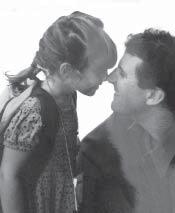
Not only does the school have the right to search students’ lockers, but also their belongings, school buses, and if parked on school property, their cars. At any time, the school has the right to call students down to the office to have their possessions searched. “The process we must follow requires us to start with a legitimate suspicion of a behavior that might lead us to be concerned that a student is in possession of something against school rules or the law. When a search is conducted we always have more than one staff member in the room,” Allen shared. He also stated that if something illegal were to be found, they then have to, “wrestle with involving the police.” The difference between the school and (Continued on page 13)
Follow Us on Twitter @MORnewspaper for more content.
Issue Four April 8, 2014 11 Features
High Stress, No Pay - MOR
Which Department Would You Be In?
There are very few distinctive personality types that can fit into the MOR newspaper staff. Each department has its own va-riety of three interesting upperclassman, making an identity for Op-Ed, Sports, News and Features. For this quiz, each department answered a series of five questions to best fit the identity that has been created for their department. Take this quiz to find out which department you would be part of!
Cece Cunningham Guest Features Writer

1) What animal best represents you? a) Platypus b) Dragon c) Narwhal d) Black Bear 2) How swag are you? a) The Swaggiest b) Swagmatic c) Minimally Swag d) 2 Swagz
3) What song best represents you? a) Anything that’s by Yeezy b) “September by Earth, Wind and Fire” c) “Let’s Get It On by Marvin Gaye” d) “Gangster’s Paradise” (Kidz Bop Edition)
4) What is your spirit animal? a) Hugh Hefner b) Shaq c) Oprah d) Prince Harry 5)How do you spend your free time? a) 24 Bummin’ b) Laser Tag c) Netflix d) My lawyer told me not to answer this question
MOSTLY A’s: If you answered mostly A’s you would be part of the Op-Ed Department. The Op-Ed Department consists of senior Landon Burt, a writer for Op-Ed and also MOR’s business manager, senior James Tuliano, a writer for Op-Ed and a co-media manager, and myself who is the Editor for our department. Op-Ed is full of talent and swag across the board. Op-Ed brings a lot of character to the MOR staff and has a closer relationship than the rest of the departments. We write a lot of hard hitting opinionated stories for each edition of the newspaper. We are easily distracted and easily distract others with the comedy and choice words that take place every day during F period.
MOSTLY B’s:
If you answered mostly B’s you would be part of the Sports Department. The Sports Department consists of junior Alex Morrell, the editor for the department, senior Brenna Walczak, a writer for sports but also the layout editor and senior Matt Segil, a writer for sports but also the MOR editor in chief. Staff motto: “Call me if you wanna reach me.” The Sports department’s members play sports all year round, and enjoy Ben & Jerry’s Phish Food more than life itself.
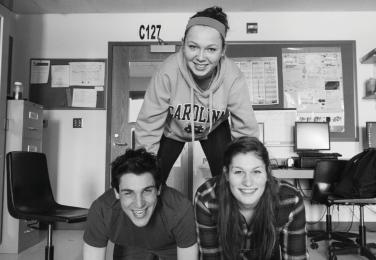
MOSTLY C’s:
If you answered mostly C’s you would be part of the News Department. The News Department consists of junior Sadie Moore who is the editor for the department, junior Sam Colby, a writer for news and also a co-media manager, and junior Kirsten Weiker, a writer for news and the distribution manager for MOR. News has a lot of important articles for each edition. None of the people in the News Department have anything in common and they are all relatively calm and hard workers.
MOSTLY D’s:

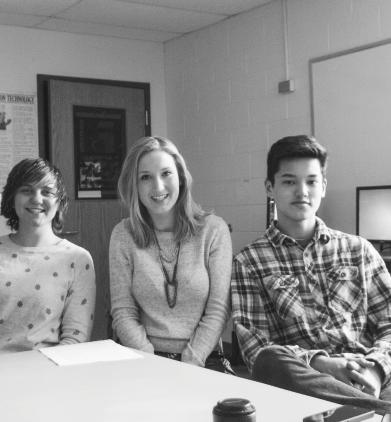
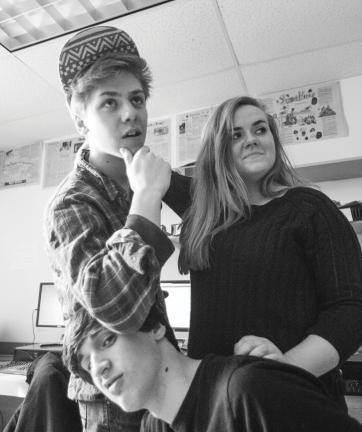
If you answered mostly D’s you would be part of the Features Department. The Features Department consists of senior Gabi Meyerson and senior Trevor Oakes, both writers for features, and senior Alyssa Bangrazi, the editor for their deparment. In the features department they write mostly creative articles. The features department is easygoing, fun to be around, and you love Indian food. Your favorite activities are watching YouTube videos in your free time, and writing poetry. Along with watching videos online, and slowly becoming the next Edgar Allen Poe, you enjoy filling in your community about the happenings in the district by writing for your high school paper, specifically, the Features department.
Follow Us on Twitter @MORnewspaper for more content.
Issue Four April 8, 2014 12
Features
the police searching a student, is that police have to have probable cause, whereas schools have to have reason to be concerned for student safety. Oyster River High School’s Resource Officer, Officer Holly Malasky, defined probable cause as being, “reliable information must show that it’s more likely than not that a crime has occurred and the suspect is involved.”
Durant explained that she unknowingly thought students had the right to deny teachers of searching their bags unless the teacher had probable cause. Finding out that teachers did have that ability, Durant stated that it made her uncomfortable saying, “I think it’s wrong.”
The 1st amendment, as we know, refers to your freedom of religion, speech, press, assembly and petition. wHawkes noted that, “There’s a difference between asserting your right to free speech and verbally threatening someone. So it is important to understand the limits of certain rights.” The only time where you may be incriminated for violating your first amendment rights is if you threaten others or make them feel unsafe, or cause “undue public alarm” (ie. pulling a fire alarm when there is no fire). Another thing to consider when practicing your first amendment rights is, are you violating the town ordinants? For example, if you were to petition in downtown UNH, “did you obtain a permit to solicit downtown? Are [you] impeding traffic? [...] It’s not illegal for someone to stand downtown and vocalize, but if they are creating a hostile environment,” explaind Officer Malasky, that’s when people may be incriminated.
In the Constitution, the 5th amendment refers to Grand Jury, double jeopardy, self-incrimination, and due process. This is when that famous line, “you have the right to remain silent, anything you say can and will be used against you in the court of law,” known as your Miranda Rights, comes into


play. There are two forms of Miranda Rights, Juvenile Miranda and Adult Miranda. With Juvenile Miranda Rights, your rights are written down for you on a form where they are read to you, and then are checked off whether you understand them. Questions may be answered if you have any about your rights. This differs from the Adult Miranda Rights, which are explained to you by an officer, and then are signed by you confirming that you understand your rights.
Officers are required to read you your Miranda Rights if ever being taken into custody, in order to avoid self-incrimination. If the officer fails to do so, any information you give must be disregarded and may not be considered in court. Your Miranda Rights, tie into the phrase “pleading the fifth,” which means to refuse to answer a question which you may be self-incriminating. “Refusal to answer [a question] in a school discipline procedure can result in school based consequences,” Allen explained. Officer Malasky shared that everybody, whether they are a juvenile or an adult, “if you’re going to be interrogated, or asked incriminating questions, you will be read your Miranda rights. If I’m going to ask your name, date of birth, social security number, all of that stuff, we’re not interrogating you, we’re just asking you for your basic information to do our job.” The only question you must answer if investigated by a police officer is your basic information.
‘you know what, I don’t like the questions you’re asking,’ that’s not a sign of incrimination. We would stop the interview and we stop whatever the process is,” said Officer Malasky. However, if you’re a witness, your circumstances are different. “You can be subpoenaed to court; and then you could be obstructing a criminal investigation if you refuse to show up,” she continued. If you’re a suspect, you may remain silent. If you are a witness, there are ways to get you into the court system.
Lastly, the 6th amendment regards criminal prosecutions, jury trial, right to confront and right to a legal counsel. “The Sixth Amendment assures that anyone accused of a crime has the right to a trial and the right to be assisted by a lawyer,” Hawkes stated.
Officer Malasky shared that, “anybody is entitled to a lawyer. If you’re convicted of a misdemeanor, class A misdemeanor or a felony, you’re entitled to a court appointed attorney.” She continued to explain that, “for a violation level offense that you might want to go to trial for, or for a class B misdemeanor, you can have an attorney but you have to hire one for yourself.” If you’re convicted of a juvenile offense or a juvenile delinquent offense, you have an arraignment and then a trial, you must tell the judge whether you are hiring an attorney or being appointed a state attorney if you qualify. “In a juvenile hearing, you’re automatically at your arraignment appointed an attorney,” Officer Malasky furthered.
occurred and the suspect
In the case of a suspect being interrogated, as mentioned, you have the right to remain silent, you have the right to an attorney and you also have the right to talk to the officer. “If at any point in time you say
“The law is super complex; and if you are in court, it’s really important that you have somebody representing you that knows the law. Otherwise you are going to get taken advantage of [...] because they know the law,” explained Zottoli. He later continued that because the police know how the system, or the laws, work, it’s important to have someone defending you that also knows how the laws work.
Issue Four April 8, 2014 13 Features
Visit us online at mornewspaper.com for more exclusive articles!
“I think that students often think that if it’s their personal [item] that no one can have access to it, and that’s just not accurate based on Supreme Court,”
- Brian Zottoli
“Reliable information must show that it’s more likely than not that a crime has
is involved.”
Know your Rights, Continued From Page 11 Did you know there is a published author in our school? Check the article out online! Want to learn about composting? Look at this article online!
-Officer Holly Malasky
“The abbreviated and somewhat stereotypical [reason I’m joining] is that I want to better myself as a person through service while also promoting and protecting the ideals of a country I care about,” says a very patriotic Alphonse.
“[The military] is a form of motivation in itself. You hold yourself to a higher standard because the military holds you to one as well.” Whether someone decides to enlist, join the ROTC program in college, or join in the reserves, they are all still a part of the larger military, but each is completely different.
ROTC is a college level program, and while it is an entity of the United States Army, it exists pretty much at the college level. One of the benefits of being in ROTC is that while you’re a cadet, you won’t be deployed overseas. So for that four year period that you’re going to college, you’re not worrying about going overseas for any particular reason. After the four years are up, you incur an eight year military service obligation. So after you go across the stage and receive your bachelor’s degree, and you receive your commission as a United States lieutenant, you will join either the Army or the Army Reserves. You pick which route you want to go during your time in ROTC, it’s your choice.
Enlisting is a different course. After enlistment you are sent to basic training, after basic training you attend Advanced Individual Training (AIT), and after you complete those two you go to a base of your choice. The Army would do their best to place you where you want to go.
If you enlist in the Army Reserve, you come back home to your local area, where you would be a member of your local reserve. Once a month, you would work for your local reserve, paid of course, and two weeks during the summer as well. That would be it, but that would be your responsibility.
The decision to go ROTC is based on, one, a person’s qualifications. The qualifications for getting into the ROTC program are set standards, and it’s a very competitive program. If the standard is 19 on an ACT and a 2.5 GPA, the people that are submitting applications aren’t there, they’re scoring well above. Not everyone is accepted.

A person who wants to be enlist doesn’t have to have that same set of standards. But if they test well, and score well on the ASVAB (Armed Services Vocational Aptitude Battery), they can enlist in the regular Army, and maybe they can apply to be an officer later.
Alphonse looks at active duty as the ultimate form of commitment, and while being deployed is highly dangerous, it’s what the military is there for. “Eventually the idea is that I will be deployed. I’m sure that after all of the training and preparation there’s nothing
you’d rather do then utilize the skills and role they’ve given you in a department,” he says.
“I do think that there are some very dangerous areas around the world, and that you can never know what is going to happen in combat. I would be very upset if something happened to him,” says Kevin Kerrigan, referring to the dangers his brother Ryan could face. Kevin encourages his brother to follow the path that he wants, and says that his brother’s decision has rubbed off on him, and he has considered the military in the future.
Perhaps the largest draw the military has in terms of the near future is the financial benefits. According to recent studies done by Bloomberg, the cost of college tuition has grown over 1,100% since 1978, an exorbitant increase for families across the country. The military, however, can afford to pay all (or most) of the expenses for any who enlist.
The military certainly helped out Staff Sergeant Harold Brown when he was done with high school. When Brown graduated from high school in 1993, he needed a way to pay for college. So he joined the Air Force, and was sent away to boot camp right after. Brown spent 15 years doing security in the Air Force, and has spent the last five as a recruiter, first in New Orleans, and now in the Seacoast area.
“The US Army offers a whole lot. We have career programs, career skill training, all skills that will transfer after separation from the military to employment of some form or another. We have educational programs, we have free medical and dental insurance for members in active duty, and at a reduced price for those in the reserves,” says Brown.
But are the benefits worth it for everyone? While many enlistees will never see direct combat, the risk is always there. PTSD runs rampant in veterans, as well as countless other mental disorders. Often soldiers not even in the line of fire come back home to find no assistance from the military, and wonder if their country actually cares about them.
“I’m going to be honest with you,
you do have to make sacrifices in the military. Sometimes there will be people put in uncomfortable positions, but that’s a part of the life. That being said, you have to make sacrifices in every job, not just in the military. Anywhere you work there’s going to be sacrifices you have to make, whether it be for your family, friends, and personal life,” says Brown. Being in the military for 20 years has given Brown a perspective that only he could have. He never would have gotten these opportunities anywhere else. “In my opinion, [the military] has helped me immensely. First and foremost, it’s allowed me to travel around the world, and to witness many cultures around the world. If we spend our whole time here in America, we never get to see how other people live, how bad they may have it and how good we may have it. Second, my college degree. I have a degree in Criminal Justice and I don’t owe any money to any colleges or universities. That degree is mine, I earned it, and I’m debt free. Third, excellent pay and benefits, and the ability to promote within the Army and earn an increase in responsibility.”
The list of personal benefits is innumerable. The military strives to teach team building, discipline, professionalism, and punctuality, all things that “lead to success in today’s world.” Brown is aware that the military is not for everyone, but hopes that anyone may be able to see the benefits that the military brings. “Everybody has the freedom to choose whatever path they want for their future. Choosing the Army as a way to achieve your dreams and goals, there is a very distinct way it helps. The Army makes it very easy to achieve those goals through teamwork and determination. They hand you a lot of the resources to make those careers, make those goals, make those dreams, real. A person that decides not to join, no fault to them of course, it just may be at times a little more complicated and stressful, whether it be financial, or emotional, or whatever. I think that as long as a person has a plan, and it’s a solid plan, they can do well.”
Visit us online at mornewspaper.com for more exclusive articles!
Issue Four April 8, 2014 14
Features
The JROTC members recieve their uniforms. (Photo Credit: Mercedes Murphy)
Continued
Page 10
A Solute to Our Soldiers,
From
Sometimes Alphonse struggles to be taken seriously with his military career. “The financial aid benefits are attractive, yes. They help me remove the financial burden from my parents, and it also helps me establish my independence coming out of high school sooner. But I am most certainly not joining solely for the benefits, people need to understand that.”
ORHS’ economics teacher, Heather Healy, is one of those worried about graduates joining just for the money. “I’m not against the military by any means. I think we should support the military, fund it, I’ve had friends who have been in it, friends with spouses who have been in it, and they’ve [all] done well. But it scares me,” she says.
“…But I worry about young kids getting sent off into a true war zone, and then not coming home. I guess it’s a risk to everybody, but if the only reason they’re doing it is because it’s the best way to cover their school costs, then I don’t know if it’s the right move. I’d like to see them use other resources if possible, and not put themselves at risk.” For students interested in joining, they need to be sure that they are ready to potentially put their life at risk, and that the military offers what they want in a career. The money and benefits are attractive, but certainly should not be the most influential part of a person’s decision to join.
“For people that are thinking about joining the Army, the first step for someone seriously interested, is to make sure that they have accurate information about what the Army is all about,” says Brown. “And really, the only way to get that accurate information is to meet a recruiter like myself, and for us to talk about it.”
Mercedes Murphy has had her sights set on joining the Military since eighth grade. “I’ve wanted to join the Marines but since my career options have changed drastically, I’ve been considering the Army,” she says. Murphy joins the growing number of women following a career in the armed forces, a number that has swelled to over 200,000 (about 15% of the entire military). She cites “the challenge” as the main factor in her decision to enlist, but sees the potential monetary and education benefits the military brings as a huge selling point. “My entire life I don’t believe I have ever challenged myself to my full potential because I haven’t really been a fan of school. By joining the military I know it will be tough, but I’m willing to accept that in able to prove not only to myself, but to others that I am stronger than I may appear.”
With many families, even starting a conversation about a child joining the military can be an insurmountable discussion. It’s an arduous task, considering a career that could potentially put a loved one’s life on the line every day. In Murphy’s case, her mother didn’t even think she’d be tall enough to join. “When I told my dad, he was a little reluctant. My step-sister recently joined the Air Force, and because of this I think that he wanted me to look into it because he knew more about it than the Marines. Since
I’ve talked to my recruiter and have gained more knowledge about joining, I’ve shared that information with him, and he has become more accepting,” added Murphy.
While Murphy’s peers have been very supportive, her decision brings up a few question marks. Namely, the increasing threat of rape in the military. According to thewire.com, there were 3,374 incidents of rape in the military in 2012, and, “an estimated 26,000” counts of sexual assault.
That was a six percent increase from 2011, and a number that has most certainly risen over the past year. While some infer that there might have been an increase in reported incidents, and not necessarily a rise in overall sexual assaults, the news is alarming regardless.
The Sexual Assault Prevention and Response Office (SAPRO) was created last decade with the intention of reducing and eventually eliminating. Skeptics will be quick to point out the numerous lawsuits and evergrowing cases of high ranking officers coming under fire for sexual assault as evidence that maybe SARPO and any other efforts the military is making aren’t enough.
After a long sit-down discussion with Kerrigan and his close friend Colby Runk, it was clear that the two had an understanding about Kerrigan’s decision, yet different mindsets.
“Ryan’s been into this stuff ever since I’ve known him, he’s been very sure that this is what he’s wanted to do for a while. It’s been [the military], the police force, spec. ops, stuff like that. I’m for it; I don’t know exactly what he wants to do. I’m definitely not opposed to it,” Runk expressed. Kerrigan explained his new desire to do something in the medical field, After graduating from ROTC, he wants to become a lieutenant in the Army Rangers.
Maybe it’s the countless hours of Call of Duty, or the dozens (hundreds?) of viewings of the Lord of the Rings movies, but Kerrigan isn’t fazed by the idea of war. “Going to war is something I would not mind doing. If I get deployed, the amount of benefits the government gives you is crazy.”
“…But I worry about young kids getting sent off into a true war zone, and then not coming home. I guess it’s a risk to everybody, but if the only reason they’re doing it is because it’s the best way to cover their school costs, then I don’t know if it’s the right move.”
-Heather Healy
“Even though the percentage of rape in the military has increased substantially, I know they have made changes in preventing that from happening, such as sexual harassment classes and having a female nurse present during medical screening at MEPS (Military Entrance Processing Station),” says Murphy. “I want to prove to myself and others that a woman can do a man’s job just as well, if not better.”
When Murphy graduates, she’s going to take a gap year before making the full transition into the military, in order to get a better sense of which branch she belongs in. “With the year I’m taking off from high school, I plan to use that time to decide which branch I want to join and training, along with having contact squared away with my boyfriend who is currently in the Navy.” Murphy’s decision to take her time and figure things out is a privilege that few receive, but it may pay off very well in the future. Even better, last year the Pentagon OK’d women for nearly all roles of active combat, though the integration process has been slow.
“The main thing I want people to know is that I’m doing this for myself and our country. I’m not joining the military JUST for the educational, health, and retirement benefits that are given. I want to prove to myself and others that I am strong and that anyone regardless of gender can join the military.”
Ryan and Colby:
Runk was quick to counter with his opposing views.
“And this is the part I don’t get. It’s not that I don’t want you to join, or that I think you’re not going to be prepared for what might happen, it’s that I don’t really know how you can prepare for something like combat,” he explained.
“I’d be very sad,” explained Runk, referring to a hypothetical situation if Kerrigan were to get seriously injured or worse, killed in action. “My thing about the military is that I don’t understand the draw. I don’t know if it’s really worth the education benefits, or any other type of benefits. If it’s what people like Ryan want to do, that’s fine and I support them all the way, but I personally don’t get it,” he continued. After a little bickering, Kerrigan took control of the conversation and put it bluntly: “It’s very stereotypical for me to say I will never want a desk job, but do not want to be stuck in a freaking cubicle. It’s something I want to do.”
“If I’m going to be in the Army, I want to be the best of the best, and the Army Rangers are going to push me mentally and physically. I want to be a part of that team that takes people down, goes on missions, long patrols, recons and that stuff. It’s just a sacrifice I’m willing to make for my country and for the people I love.”
Those uninterested in military service may perhaps never fully understand the desire to serve and protect our country at the ultimate risk. The military is certainly not for everyone, that much is obvious. Risk, danger, and fear are present, sure, but what about the sense of brotherhood, the glory and the patriotism involved. The sole goal of serving and protecting exists in even the lowest of privates, and we should applaud the leap of faith that enlistees are taking.
Follow Us on Twitter @MORnewspaper for more content.
Issue Four April 8, 2014 15 Features
What Not To Not Wear Fashionably Phresh

Have you ever wondered how to look cool? That’s a silly question, of course you have. Luckily as a denizen of the world of high fashion, I can assist. Be it wearing stylish furs or flannels, I’ve got you covered.
Senior Maggie McNamara is a fashnista who knows how to make a look work. McNamara is a bit of a revolutionary in fact stating, “I started the whole leggings and flannels in middle school… this outfit is not only super comfortable, but it’s really easy to recreate over and over again. Wore a green flannel yesterday? Wear a red one today. People will never catch on.” If you’re looking for an extra spicy way to kick up your style you could even wear a blue flannel!
 Editor-In-Chief
Editor-In-Chief
to me,” says Kerrigan. Kerrigan believes the kilt is next on the list of big style trends at Oyster River saying, “I think the Scottish kilt will really catch on because it is sexy. Mel Gibson did it in the 1990s, and who doesn’t like Mel Gibson’s choices?”
Worried about where to show off your
For freshman Reed Gibson the new style is scarves. Just scarves that is. Why weigh yourself down with unnecessary clothing when light and airy scarves are all you really need. Although wrapping and tying the scarves in the right places to preserve one’s dignity can get tricky, Gibson says he feels, “beautiful” wearing the outfit.
Although rocking the style now, Gibson progressively predicts that the next big fashion style could very well be taking those scarves off and, “being nude!”
just can’t stand leaving their furry fiend all alone at home,” says junior Adele Ziemek. Ziemek, says she has been wearing felines accessories since, “as long as I can remember.”
new style appropriately? Luckily McNamara knows her stuff, saying, “you could literally wear this anywhere. School? Prom? Beach day?” Make sure to look this good everyday and remember, “leggings and flannels are forever.”
Senior Ryan Kerrigan knows how to rock a true spring look wearing a stylish Scottish kilt. “Dressing up like a Scottish highlander makes me feel free and masculine. Probably because the kilt doesn’t need anything under it and I like a steady breeze,” says Kerrigan. “This outfit is suited for everything, from throwing logs in the highland games to killing English with claymores and everything in between.”
“I’ve always been a big candidate for high fashion because I am one of the top 3 sexiest men in the 2014 class. People look up
Sophomore Andy McQuade discovered style in the bottom of a basement. That is, he discovered an old safari hat, that quickly became his favorite style. “It’s hard to put the lifestyle of wearing a safari hat into a feeling but some words that come to mind would be stylish and trendy,” says McQuade. “Safari hats are great for formal occasions like weddings, business meetings, presidential inaugurations, etc.”

McQuade looks to expand this up and coming trend recommending the style to, ”everybody, but mostly to the teachers and administration of the high school. It would add some much needed spunk to the school day.” McQuade projects the next big style will be, “moon shoes… I’ve seen some kids from the younger generations rockin’ them and personally I think it’s a great way to get around.”
If you’re on the cutting edge of swag you may already be familiar with the popular style trend of cat scarves. Having a cat is great, but utilizing your cat for the sake of fashion is better. “Anyone that has the confidence can pull it off. Or anyone that
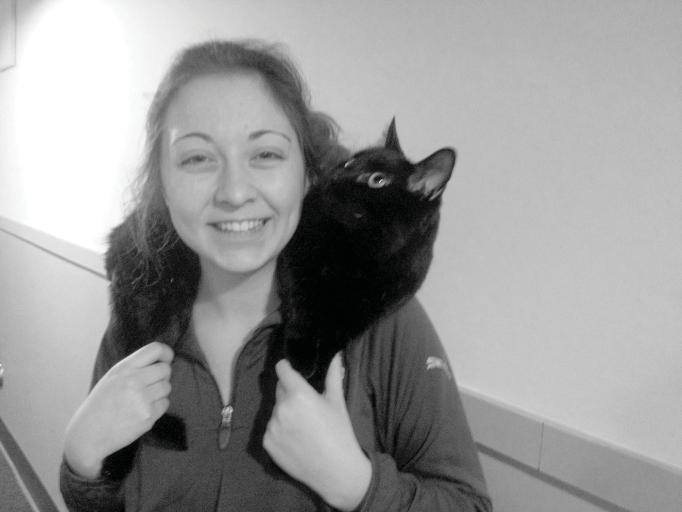
If you love your cat and love fashion then this trend is a must have. And if you’re worried about what situation to rock it in, Ziemek has you covered saying, “cats can be worn at any occasion. Dress it up or dress it down.” If you’re still on the edge of recognizing this style, then imagine this scenario: you’re walking home from a long day of work in downtown Durham. You take the romantic Durham House of Pizza alleyway to get to your car when out of nowhere a swarm of mice come running at you. Thankfully your feline friend swoops off your shoulders eating all of the mice and jumps right back on your shoulders. Just then the cutest boy in the school walks by and sees your incredible sense of style, giving you a not-too-subtle check out. Convinced yet?
Follow Us on Twitter @MORnewspaper for more content.
Issue Four April 8, 2014 16
Features
Matthew Segil
Adele Ziemek showing off her cat scarf. (Photo credit: Todd Ziemek)
Andy McQuade reflects on how great his safari hat is. (Photo credit: Sam Colby)
Maggie McNamara gives a thumbs up to sensible style. (Photo Credit: Liam McNamara)
Where Am I? The Experience of a New Student at ORHS
Imagine walking into a new place knowing nobody, having nothing to guide you but a piece of paper with locations that mean nothing to you.
Being a new student in a place like ORHS, where most people have been friends since elementary school, can be hard. There isn’t a set system for orienting students who join part way through the year to make sure they find their way. Many students just wander around trying to find their classes. They aren’t always assigned a student to “shadow” who could be their resource. Most students have been going to Oyster River for most of their lives and already have their set friends. Oyster River doesn’t get new students very often and isn’t particularly welcoming. Going through the school day not knowing anyone is a scary experience.
Sadie Moore Guest Op-Ed Writer

Austin O'Rourke, who recently transferred from Spaulding High School to Oyster River, explains what he did before starting school at Oyster River, “It wasn’t really an ‘orientation’, I had to come into the school and talk to my counselor and get all my classes situated. Then she gave me a really quick tour to show me around and then a couple days after I was going to school.” This seems like a very quick turn around with little time for him to get acquainted and ask questions like where his classes actually are.

“If Mrs. Sekera saw me in the hallway she would ask how everything is going and make sure I’m happy with what’s going on,” O”Rourke says.
“I was kind of nervous going into new classes and not knowing anyone,” O’Rourke admits. He had to simply ask peers where he could find his classes which could be a dreaded experience for someone less outgoing that O’Rourke.
“I think new students might feel a little uncomfortable when they first get here. That being said, 95% of students here are kind and welcoming,” says senior Jeff Ahlgrim.
“If [new students] used [the counseling office] to their advantage than I think they could do fine. But if they didn’t use [Coun-
seling] or they were really shy about asking people it’d be pretty hard for anyone at any school,” says O’Rourke. “Oyster River is so much smaller than Spaulding though so its much easier to wing it,” he adds.
“[Counseling] could connect new students with current students more,” says Social Studies teacher, Matt Pappas.
Samantha Londergan transferred in November from Florida and had an orientation a week before school started and got a tour from Jason Baker. “The first day he helped us find everything,” she explains. Londergan says that people were “not at all” welcoming.
Everyone sees it in the movies, the new kid comes and ends up having to eat lunch alone in the bathroom. I’d hope that nobody would want a student to feel alone in a new scary place.
This is Londergan’s fourth school and she says that in her other transfers “everyone was a lot nicer.” She explains that transferring here was “easy because [she’s] so used to it.” “Once I got adjusted it was fine,” she adds.
She agrees that teachers, administration, and the counseling office could do more to make the change easier. “Nobody was really worried if I made friends,” It was also a huge change for her to switch from a huge city like Tampa to Durham where there is “nothing to do,” she explains
Most students already have their group of friends and aren’t really looking for more.
“I feel like new students just kind of show up sometimes,” says junior Ella Cedarholm. “I’d love to help them out but nobody ever tells us their coming so I just say hi and go on with my day,” she adds.
Ahlgrim feels as though new students find their way and fit in fine.“There's a lot of different kids here interested in different things, and everyone finds their own group of friends,” he says. He has gone to Oyster River for all of High School and Middle School, along with Cedarholm.
“The best thing students can do is smile and say hello and welcome them and let them know if they need anything you will help. We don’t do enough of that, and there could be more staff encouragement to do that,” Pappas says.
“A new student task force would be a great idea; 10 students that could be counted on to introduce people to the school,” Pappas adds. I agree with this idea and think it would be a great idea. This would give new students familiar faces and connections. There are so many people in the world but if you just stay with the friends you have always had, you will never get to know them. If you reach out to someone you may find a new best friend, even if you don’t, you made that person a little more comfortable in a situation that can be very difficult.
Issue Four April 8, 2014 17
us online at mornewspaper.com for more exclusive articles!
Op-Ed Visit
“I was kind of nervous going into new classes and not knowing anyone.”
-Austin O’Rourke
“The best thing students can do is smile and say hello and welcome them and let them know if they need anything you will help.”
-Matt Pappas
New Students Austin O’Rourke and Hillarie Kimball
Op-Ed
Andy Allen
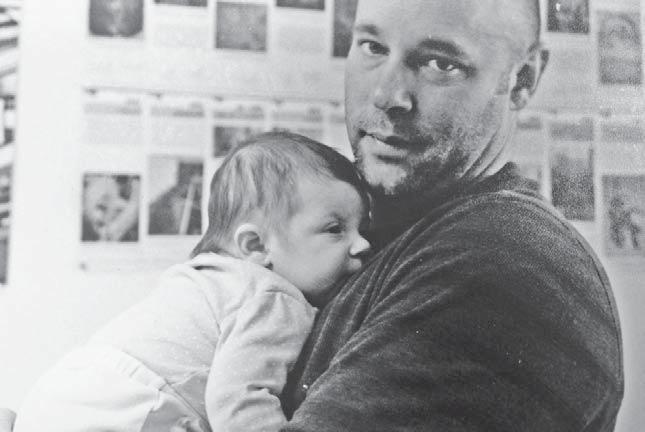
Wishing Our Mentor Good Luck in the Future
Here at Oyster River we are privileged to work with so many teachers that care so much about their students and school as a whole. Our school has very high expectations for not only the students but the teachers as well. Along with many of the teachers that walk among us at this school, Andy Allen has made an impression on many kids throughout the years.
Burt Op-Ed
Allen had been part of the Oyster River school district for several years now. He has worked at both the high school and the middle school as an aid and to display a positive role model. His humor and winning attitude gave him an edge over many others in the school and he was able to relate to several kids at the school. “What I love about Oyster River is it’s not just a school but a family and community. Kids, parents and staff are all very dedicated to making this the best school system possible. Having worked as a paraprofessional for 13 years it still amazes me how much support students with special needs get from other students.” says Allen. Allen is one of those unique people who is able to meld his life style and teaching into something that motivates and helps kids in ways others cannot. “My favorite part of my job is watching kids learn and grow. Helping a student be successful is so rewarding. The other part is just interacting with students, finding out what’s going on in their everyday life and showing them I truly care. Every morning while waiting for my students’ bus I would wait and hold the door for other students coming inside. I always made it my goal to say hello or even strike up a conversation with everyone that walked by.”

Personally, I was able to experience this first hand. He would always wait for me by the door holding it open and crack a joke or just say something nice that helped start my day on a really good note. Not being able to have that, or the atmosphere that Allen brings to the school is going to change my mood every morning and make each day a little less exciting.
Allen gives much credit of his teaching style to his father, who influenced him significantly. “My father was my role model growing up, and not just because he was my Dad but because I was always amazed at how well he worked with kids in both teaching and coaching” says Allen. Allen felt that his Dad had such a huge impact on kids and made learning and coaching fun for everyone. “People often tell me I am just like my dad when I am working, and to me that has
always been and always will be the biggest compliment I could ever receive.”
Not only was he an aid at both of schools but also he was an 8th grade basketball coach for several years at the middle school along with being a high school tennis coach. “Mr. Allen was an important person to me during my time at Oyster River. While he was he a good basketball and tennis coach, he was most definitely a better person. I used to constantly bother him during school about college basketball and Mr. Allen would always take time out of his day to talk to me,” says Zach Park, an Oyster River alumni who was coached by Allen in both tennis and basketball.
Recently ORHS had run out of students in his particular department and a job for Mr. Allen is no longer available here. Despite his unfortunate termination, his head is still high, and he is grateful for all the memories he has had at Oyster River. “The termination of my job was nothing but bad luck. As it stated in my contract, if my student leaves the district my contract becomes void. I have nothing but good things to say about the entire Oyster River community. The administration, staff and especially the students are like family to me. I have so many fond memories and no matter where life takes me from here there will always be a bobcat blood running through my veins. Everyone has been so supportive and I’m blessed to have 13 years full of wonderful memories.”
“It’s very sad to see Mr. Allen leave and I am not sure if the school would be the same without him,” says Chris Gallant, a senior at ORHS who is close with Allen. Many kids have done everything they could in order to save Allen’s job here at the school. A petition was made to save his job and was all over Facebook. The petition had received
almost 350 names and nice responses from people from our community that were fighting to keep Allen at our school.
Not only did students have nice things to say but also his coworkers. Alex Foster, another Para that worked with Mr. Allen at Oyster River Middle School expressed his gratitude “Mr. Allen is someone who goes out of his way to make you feel welcome. When I started working with him at the middle school he was one of the first people to welcome me. He invited me to help coach the 8th grade basketball team. He made Oyster River a better place through his investment in students and staff. As an Alumnus and former staff member, I am thankful the impact Allen has had and hope that there will be a way for him to return in the near future”.
What is Allen on planning on doing in the future? On top of winning the NCAA bracket billion dollars to do whatever he wants, he says he wants to continue his passion of working with kids. He feels that there is no better reward than seeing a smile on a kid’s face and feel good about themselves in a learning environment.
In conclusion our school as we know it will definitely not be the same without Mr. . Allen to add to some life to it. Many ask why bad things happen to such great people. When maybe in reality we can only hope that his may be a blessing in disguise for Mr. Allen and we all are confident that he will be very successful where ever life may take him next and that he will not only make kids smile, but continue to make the world a better place.
“Every student is important to me so I always try to smile and make them laugh. To me teaching just isn’t about tests and grades, its helping kids with everyday life.”
-Andy Allen
Issue Four April 8, 2014 18
Visit us online at mornewspaper.com for more exclusive articles!
Landon
Allen with his daughter, Drew. (Photo Credit: Cece Cunningham)
“Mr. Allen would help me or anybody else out no matter what it took. He is very inspirational. Oyster River would not be the same without him!”
Op-Ed
“Although I never worked in school with Mr. Allen, he was my coach on the tennis team for 2 years. He definitely changed the way I think about sports and improved my high school experience. ORHS would without a doubt miss his presence greatly.”
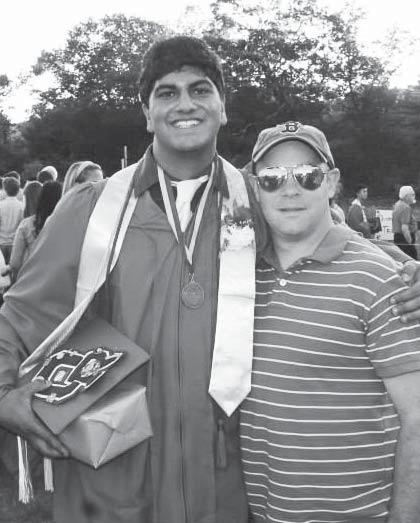
“Mr.Allen is one of the true charms of Oyster River. He spreads positive energy throughout the school and is one of those people you’re never afraid to ask a question to. He’s an amazing teacher, coach, friend, and part of Oyster River.“
“I graduated Oyster River in 2009. Mr. Allen is a great guy and has served this district well for many years. People like him are what make Oyster River a special place.”
“Mr. Allen is one of the educators in the Oyster River School District that had the greatest impact on my life during my 12 years in that school system. Though knowledge in the form of math equations and scientific concepts is indisputably important to learn from a school, what I learned from Mr. Allen goes beyond the books. He taught me how to be a compassionate individual who was not just a student at a school but a part of a community that I should do my best to take care of. Even now that I’m 11 hours away at James Madison University, I carry that same attitude with me, reaching out to find ways to give back to my new surrounding community. To let go of an educator like Mr. Allen would not only be a disappointment to every person that was lucky to have him as a teacher, it would also be a huge disservice to the rising students in the Oyster River community.”
“I don’t know Mr. Allen personally, but he made an effort to know me by name. Everytime he passed me in the halls he would say ‘Hey Freddy!’ or compliment my outfit or show a kind gesture. The world needs more positive forces like Mr.Allen and I can think of a ton of other teachers who did not show me this sort of kindness who knew me personally.”
“Mr Allen is one of the most amazing individuals I have ever met. Whether it’s through his dedication to his profession, loyalty to his students, or caring personality, Mr. Allen finds a way to have an influence on everyone he meets. He was much more than a teacher to many students; he is a coach, a mentor, an inspiration & most importantly a friend. He finds the positive in all situations something I have tried to emulate in my life. Mr Allen has been a very influential member of the Oyster River community and his smiling face in the halls will be missed. I wish him the best of luck in the next part of his life, but i truly thank him for helping me so much in my time at ORHS.”
Follow Us on Twitter @MORnewspaper for more content.
Issue Four April 8, 2014 19
Allen at graduation with alumnus Pranav Nanda. (Photo Credit: Pranav Nanda)
A selection of students’ quotes on how Mr. Allen affected their years at ORHS:
Op-Ed
Problems With America’s Public School System
From a High School Junior’s Perspective
Throughout our years of schooling we are told that school performance and letter grades will directly impact our future success and by extension, our future happiness. After almost 12 years in America’s public school system, I finally realized I’ve been lied to. As the years go on, your mind is slowly placed between societal barriers, conditioned to believe what you are told and do work that does not benefit yourself in any way. What seems to be the main issue is that school is mentally exhausting, when it should be mentally stimulating. While I have definitely been able to find mentally stimulating aspects of school (specifically social studies classes and access to creative outlets), many aspects of school simply detract from the time I could be spending on my own true passions. It’s upsetting that so many students believe the lie that school will guide them in life, and that they can leisurely survive school and eventually their life’s purpose will present itself based on information and ideas forced into their heads. I want to arrive at my own conclusions, govern myself, and pursue my own creative passions, not idly waste my time doing the work others have given me, for what? A letter grade that supposedly represents my intelligence? While there are some aspects of school that present wonderful opportunities, it’s almost a waste because our every waking minute is spent chasing a letter grade to satisfy others. What school has never taught me, is how to chase my own passions, and how to seek out these opportunities for myself.
Sam Colby Guest Op-Ed Writer

only thing
have gained from high school had it not been for the art department would [have been] a strong disrespect, distrust, and disdain for the society in which I live”
survive, we must be constantly thinking of our future. School is an extension of this, we are told that school performance will equate happiness in our future. But I don’t want future happiness, I want immediate happiness. If you can surround yourself in things you are passionate about, I believe you can be happy. Constantly working of a letter grade does not fit into this happiness model. Oyster River High School 2013 graduate, Peter Dube also has many criticisms for our school system, but developed a passion for pottery his senior year at ORHS. “I was fortunate enough to discover ceramics my senior year and I had the help of the most wonderful woman I’ve ever known, Kim Sekera, who connected me to my current boss,” explains Dube. Dube shares my opinion for free thinking, and for what some may consider pessimism, but I would argue relentlessly to convince those that it’s just realism. “The biggest overarching problem with our school system is that it does nothing to prepare most students for the real world,” says Dube.
pan, but I doubt I’ll ever go to college. Students like Dube are fortunate to have found their passion in the chaotic mess that school presents. However some students choose to leave the public school system altogether, in search for something more meaningful. Former ORHS student Keven Nawrocki left public school in the beginning of his junior year at ORHS, and has continued his schooling online, through VLACS. “Public education gives you a certificate but in the end it doesn’t prepare you for what you want to do,” states Nawrocki. He adds “one of the things about public education is that you move with a group, if you fall behind you’re [in trouble], if you’re ahead you’re wasting your time.” He chose VLACS online school because it gives him “less structure, which is beneficial”. Nawrocki is currently “figuring out what’s important in life”. One of his main reasons for leaving public school, is due to disagreement with its structure. “You need to be independent eventually,
If someone is to be a member of such a complex society like America, they simply need money. The truth is, money does not equal happiness, money equals convenience. Since the level of existence has risen so far beyond simply existing, money has become a necessity. If you don’t have money it’s hard to get anywhere, so we are told to set ourselves up for money in the future. It’s quite the contradiction; you are only happy if you think in the moment, yet in order to
Dube is one of the rare students who was able to find aspects of school that actually contributed to their life. “I had the exceptional teaching of one of the best potters I’ve ever met, Mrs. Bilynsky and Mr. Lawrence, without whom I would have no direction in my life,” explains Dube. Being extremely grateful for the school’s art department, Dube states “You’ll always gain something from any experience, high school included. The only thing I would have gained from high school had it not been for the art department would be a strong disrespect, distrust, and disdain for the society in which I live and the governments and companies that control it.” Having not been able to say it better myself, Dube says some parting words: “At some point I might apprentice with a master potter my boss knows in Ja-
VLACS.org online school hompage.

why not start now?” Nawrocki explains. He currently plans on living a simple life in the future, and making himself happy. “Happiness is achieved by fulfilling yourself, fulfilling society’s expectations is not happiness,” he says. Another reason for leaving public school, he explains is because “at school you’re fed information to regurgitate backit has nothing to do with intellect, school is training to work, life is training to think.”
Follow Us on Twitter @MORnewspaper for more content.
Issue Four April 8, 2014 20
“The
I would
- Peter Dube
“At school you’re fed information to regurgitate back, it has nothing to do with intellect, school is training to work, life is training to think” - Keven Nawrocki
While I can’t say everything Nawrocki has done would work for me personally, I can say I admire the fact that he figured it out for himself. Besides the huge problem of a misleading and distracting curriculum, another issue in America’s public school system begins with teachers. While I have met my fair share of incredible, thought provoking teachers, I have also met my fair share of mundane, boring ones. Speaking strictly of certain teachers’ teaching habits, I believe one’s teaching method does not entirely speak to their personality outside of teaching. I believe teachers hold one of the most powerful positions in the country, perhaps the world. In a sense, they have the ability to shape the next generations of humanity. It disappoints me to see some teachers throwing away this opportunity. While I realize I obviously have no personal teaching experience, I can only make my judgements based on the comparisons of other teachers. The root of this inadequate teacher problem seems to stem from our society’s viewpoint on teachers. In countries such as Finland and Sweden, the profession of a teacher is held at a much higher value and level of respect, as it should be.
Joe Onosko, University of New Hampshire Professor of Education, is more qualified to speak about our education system than anyone I have ever met. Onosko states that one of the main purposes of teaching should be “helping students become confident, independent learners.” As a Professor of Education, Onosko prepares people to become middle and high school teachers.
Onosko says that over the last few years “teacher preparation programs in our country have gotten more rigorous”. Onosko says good teachers should help students “develop curiosity, focus, think critically, and develop positive relationships with students.” Having met a good amount of teachers that fit this description, I often wonder why there aren’t more who are of equal quality. Onosko believes this issue stems from the way our government defines quality. “Since 2002 the federal government has implemented a standardized punitive system that thinks we’re going to improve our schools by hiring and firing our teachers based on student test scores,” explains Onosko. The problem with this, is “a test score is not a reflection of all the things they [teachers] do with students,” says Onosko. He adds “what great educators do is
about is not measured by those tests”.
As briefly mentioned before, I (and many others) believe numerous Scandinavian countries have a superior school system. As Onosko explains; “they have higher standards regarding who can become a teacher”. For example, “100% of all Finnish teachers graduate in the top one quarter of their class,” explains Onosko.
Martina Lofquist, a current ORHS senior has had the opportunity to be part of America’s school system as well as Sweden’s. Studying abroad in America this year, Lofquist has already noticed many difference between the two country’s education systems. While she doesn’t have the higher education perspective of someone such as Onosko, Lofquist is able to recount what it’s like being a student in Sweden. “In 10th, 11th, and 12th grade we pick a school depending on what interests you have,” says Lofquist. For example, “you can pick a social science program, or you can study language, or dance, or music,” says Lofquist. She says college is similar, where “you go to a specialized college that relates to your interests, it’s similar to the U.S.” However what is vastly different, is the way in which college is paid for. “In Sweden there’s not that many private colleges, if any,” explains Lofquist. This, combined with a high federal tax makes college free in Sweden.
“Since college is free you can apply to the schools that you really really want to go to” says Lofquist.
Pulling things back to this side of the pond, many students at ORHS (besides myself) share a similar disdain for the way schools work. ORHS Senior Shelby Grogan states simply: “I think it could be approved upon.” She explains “we are all expected to achieve the same thing even though were all so different.” A topic that I have not yet touched upon, Grogan expresser her frustration with our education system’s extreme harshness. “School is a place, where you either do well and hooray, or you do poorly and you’re frowned upon,”
says Grogan. She adds “However, I want to go to college because you can take classes that are much more catered towards your interests.”

Catering towards personal interest, something that I believe ORHS actually does an excellent job of. Sharing this glimpse of optimism is ORHS social studies teacher Pam Raiford. “I think we [Oyster River] are outside the typical mold of public high schools,” states Raiford. “I think the choices that Oyster River students have here are amazing and good for education,” she adds. Being a part of the group of excellent teachers that I’ve had the pleasure of meeting throughout my school years, Raiford also has a similar image of a quality teacher as myself and Onosko. “The main responsibility of a teacher is to really connect with students, it’s teaching but it’s much more about inspiring kids to learn,” explains Raiford.
I realize that the topic of our country’s education system is far too vast to cover in an article, yet I hope to have scratched the surface from the perspective of a high school junior. If nothing more, I hope more students realize that they themselves are the only ones piloting their future. I hope students realize they need to stop wasting their time and efforts pleasing others, and start putting that time towards something they’re truly passionate about.
Issue Four April 8, 2014 21
Op-Ed Visit us online at mornewspaper.com for more exclusive articles!
“Since 2002 the federal government has implimented a standardized punitive system that thinks we’re going to improve our schools by hiring and firing our teachers based on student test scores.”
- Joe Onosko
“We are all expected to achieve the same thing even though we’re all so different.”
-Shelby Grogan
Shelby Grogan sits down to talk about America’s public school system. (Photo Credit: Sam Colby)
Ain’t Nobody Messing With my Clique
Social Structure at ORHS
How many high school movies have you seen where a group of jocks pick on nerds, date cheerleaders, and rule the school?
These same movies usually contain a subclass of skaters, emos, goths, punks, and all manner of cliques. These groups all have a defining value, feature, or passion that they guard exclusively. Stereotypes and social stigmas are ripe in many schools, but does Oyster River fall under that same pattern?
Walking down the hallway of Oyster River High School (ORHS) you wouldn’t notice anything out of the ordinary. Friends chat, teachers bustle by, and students hurry to class. What you don’t see at first glance are the invisible social lines separating them. Are the jocks, social climbers, and geeks screaming for attention? Perhaps not, but that doesn’t mean they aren’t’ there.

Being in a clique means meeting a certain number of prerequisites. Most are controllable, such as fashion, study habits, academic interests, or sports. Yet some cliques are based on factors that students don’t have a say in, such as location, economic status, ethnicity, physical build or gender. Anyone who’s ever been in a clique knows it can be fun, but there is often an unintended exclusionary effect.
The real question is, even if we do have cliques, is it really such a terrible thing? Senior Aidan Conrad shares his opinion saying, “I think by the definition there are cliques. I don’t necessarily think they’re bad, clique has a negative connotation. People who like each other and do similar things hang out.” So hypothetically, there
should be room for everyone in a social environment such as ORHS. But why is this not entirely accurate?

Conrad speaks bluntly saying “I feel like we’re all either adults or almost adults; if you’re excluding someone then you’re excluding someone for a reason valid or not. If people don’t like you than you should probably be more likeable toward that group. I feel like we’re old enough, and were past 8th grade, that you don’t need to pretend to be someone you’re not to fit in to a certain group, because you can fit into a group just the way you are.”
Sociology teacher Brian Zottoli jumps into the discussion saying “There definitely are cliques at Oyster River, but they’re re-
especially if you’re not in a pre existing clique; working to find friends can be difficult but it’s also the best way to put yourself out there. I think for many students finding somewhere to fit in is all about looking in the right places. If Conrad is right, and he usually is, then any student can find a clique, or group to fit in with if he or she is true to themselves.
Senior Aleric Schuester agrees with Conrad’s points saying “It seems like there are groups of people based on common interest; but they don’t seem anywhere near as defined or clear as the common idea of a clique.” Schuester thinks for the most part cliques don’t “have an overly negative impact.” He goes on to say there are exceptions when dealing with new students trying to fit into already formed groups.
Schuester had trouble placing himself in any one clique saying, “I kind of float between different groups of friends.” Is this case for most students at ORHS? Being in a group means friendship and security, but is it possible that the school environment is welcoming enough that students aren’t forced into joining extremes to get that same sense of uniqueness? We’d all like to think so, but the reality is ORHS isn’t able to support every student.
ally confusing.” Zottoli believes that many cliques at ORHS have a certain fluid aspect revolving around sports seasons. This means that going through different seasons can mean different friend groups and plenty of different students being included. Zottoli goes on to explain a slight discrepancy, “I think that within anything there’s a problem if you want to be included and you’re not.”
So what should these students who can’t fit in, do? Personally I believe making the step towards something new is the most important part. If you’ve always played hockey but never fit in, maybe you should start going to those chess club meetings that interest you. Having the security to try something new like this isn’t easy,
Coming to a new school is definitely not an easy thing to do. As a senior, Caleb Cole has the added disadvantage of coming into the very end of his class’ high school year. “Everyone as far as I knew grew up from elementary to high school, and already had their group of friends. There’s no reason for them to step outside of their friend zones to be friends with me,” says Cole. “The effect is it comes across as sort of being ignored a bit.”
This type of exclusion can be intentional but is also quite often unintentional. Students form friend groups and become so relaxed and secure where they are, they never want to step out. “They know their social place, and they’re just really comfortable with it,” says Cole. Unfortunately this means students like Cole, coming into a new environment have to work twice as hard to make friends.
Cole never tried to join any cliques. He
Issue Four April 8, 2014 22
us online at mornewspaper.com for more exclusive articles!
Op-Ed Visit
“Humans need to belong, and often times cliques provide that venue.”
-Brian Zottoli
Matthew Segil Guest Op-Ed Writer
Chris Rouleau walks down a hallway, momentarily alone. (Photo Credit: Sam Colby)
“I feel like we’re old enough, and were past 8th grade, that you don’t need to pretend to be someone you’re not to fit in.”
-Aidan Conrad
never tried to go to extremes to be noticed or feel unique. In fact the only thing he did do, was be “really social with everyone, but it took a really long time for anyone to be social back.” As a member of ORHS this upsets me. Not because Cole doesn’t belong to any specific clique, but because few people had the decency, or security, to tiptoe out of their comfort zone and make small talk with him. Cole isn’t too perturbed though, and he doesn’t feel like you need to be part of a clique to fit in, saying “you just need someone else who’s willing to be friends with you.”
Guidance Counselor Kim Sekera certainly hears her fill of social drama. This includes hearing from just about every student group in the school. Sekera shares her opinion saying “If you’re in a clique it’s okay because you have a sense of belonging… It becomes challenging when there isn’t mobility between groups.” The problem, Sekera thinks, is that students become too rigid in their social bubbles, and don’t want to expand. Once this happens certain students find themselves excluded, whether it’s unintentional or not.
Another problem is the hierarchy between cliques. Does being in one clique carry more social clout than another? What if I told you that some groups in ORHS are subjugated simply by colloquial terminology? Is this a problem we should be worried about? If there are students in the school that are looked down upon for belonging to a certain friend group, is that something we should try and stop? It’s true kids will be kids, but stopping any sort of bullying, whether direct or passive, should be paramount for every student in high school.
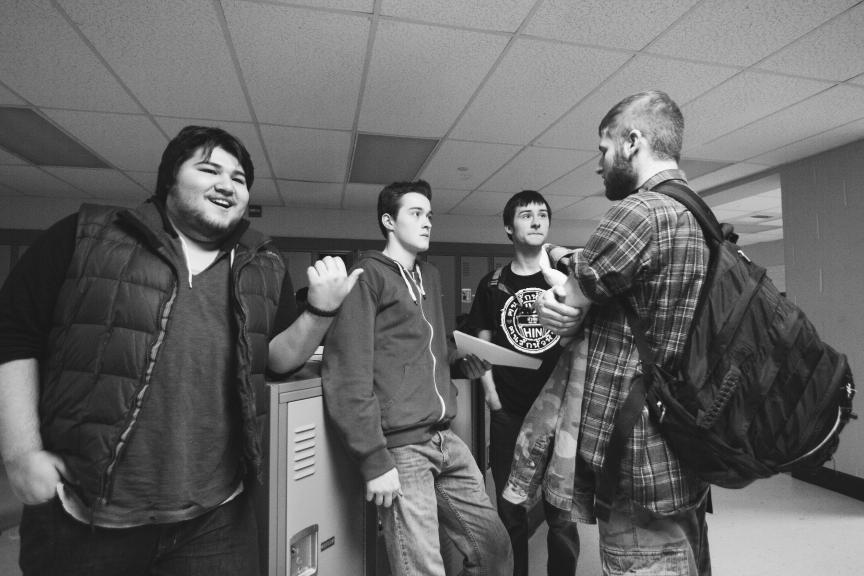
Imagine for a second you’re in the shoes of someone who isn’t treated the same for no direct reason. This warped social inequality limits, to a drastic extent, how you are treated on a regular basis. So how do we stop this? If everyone takes that one step to think for themselves and not support a bully, or actively oppose any sort of bigotry, then perhaps we can slowly change the so-
cial clime of our school. It’s a big idea, and one that is easier said than done, but it takes an individual to make it a reality. You, as the reader just need to recognize that you are that individual.
Could social groups really function though without any sort of exclusion? With every student finding their own place in the adolescent mayhem of high school? Lets jump into Sekera’s mind for a second and say yes. In her world cliques could still exist but not as ultra exclusive groups. Sekera would like to see ORHS as a place “where everybody sort of feels like they have a group of connected friends and individuals. The groups are malleable and not defined, and everyone is viewed as equal.”
We need to recognize that these groups are not innately bad. Forming groups is a natural biological adaptation and they can be extremely beneficial for the members. Having a group to support you and a place you feel that you can belong to is an essential part of human learning and development. “Humans need to belong, and often times cliques provide that venue,” says Zottoli. Although there are exclusionary consequences I would argue the good
outweighs the bad.
The pressure to conform is unfortunately strong, but what does that say about our school? This pressure is indicative of the teenage mindset in that it shows how badly adolescents want to belong. The tricky part is being true to yourself and finding that place of acceptance. So maybe right now you don’t quite fit in where you are. Maybe you’re just an awkward underclassmen in a brand new school. This is life. This won’t be the last new situation where you’re thrown into something uncomfortable.
Having the courage to be yourself is hard, but extremely rewarding. Stepping outside of your comfort zone to find a place you fit in is an extremely important life lesson that will help you throughout new jobs, and careers. Once you’re in that position, the real power lies in your hands. You have the power to help those who aren’t quite comfortable, or haven’t yet found their place. If you’re privileged enough to know you belong somewhere then it’s almost your responsibility to share the love.
You can be the one to tiptoe outside your comfort zone and talk to that new student. You have the power to balance the scales and take the power out of a bully’s hands. It’s all talk until you make these things happen. I’m issuing a personal challenge to every reader to help make this change. Help make the school a more welcoming place and break down the barriers between social groups. This is the opportunity for you to catalyze a real life change and see the results. It may be a big idea... but it’s far from impossible.

Op-Ed
Issue Four April 8, 2014 23
Follow Us on Twitter @MORnewspaper for more content.
“There’s no reason for them to step outside of their friend zones to be friends with me,”
-Caleb Cole
The social jungle of the high school is observed at the feeding ground.
(Photo Credit: Sam Colby)
Seniors soialize amiably in the core. (Photo Credit: Sam Colby)
Op-Ed
The Expansion of Music Genres
And How They’re Stretching to Different Areas
Out of all the forms of art that exist, music seems to be the most widely appreciated. In a modern world of ever evolving subcultures and artistic identity, many aspects of music continue to grow less and less definable to a single genre. The convenience of the internet and the rapid blending of cultures surrounding art genres seem to have stretched music genres to broader corners. Among some of the most evolved and expanded genres, indie, hip hop, and the many waves of ska exemplify this crazy, ever evolving art form called music.
Sam Colby Guest Op-Ed Writer
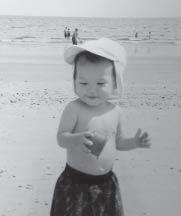
bum Beach House. Since the release of their debut, “Beach House” has released three more albums, with the latest from 2012, titled “Bloom”. Their sound has most definitely evolved, but not hugely changed from Beach House to Bloom. The calm, almost hypnotic sound of Beach House contrasts the high energy and almost spastic sound of Passion Pit. It’s hard to believe both bands are loosely categorized as indie, yet you can almost sense an abstract similarity. Passion Pit’s most recent album “Gossamer” took on a few minor hip-hop influences. Despite numerous negative reviews, “Gossamer” remains my favorite Passion Pit album, and spoke to me as a product of lead singer Michael Angelakos’ turbulent experience in and out of hos-

With so many indie sub-genres today it’s no wonder so many vastly different sounding acts are still all categorized as “indie”. To list a few of them: indie-pop, jangle-pop, indie folk, dream pop, indietronica, synthpop, and post punk revival are just a fraction of the subgenres that have come out of indie music. The indie genre itself and the evolution it has gone through pays homage to the huge change that music in general has undergone.
If you can look past the mass amount of teenage girls vicariously living their lives through tumblr and claiming to be indie music fans, you might realize that the term indie has drastically changed in definition. A term which once defined music and film as being funded independently, indie now describe a whole new genre of subcultural music. With many aspects of the former subculture being dragged into the mainstream and made widely recognized, it seems like some music acts have taken advantage of this, in an attempt to make a lot of money and consequently losing authenticity. With roots in bands like Joy Division, Talking Heads, and even Nirvana, the genre has spread to different areas and been influenced by evolutions of music.
Some of my personal favorite indie groups, Beach House and Passion Pit, sound vastly

different from each other, yet are still somehow categorized as indie. A duo from Baltimore, Maryland, Beach House first entered the scene with debut self titled al-
pitals, as well as canceling numerous shows in hopes of improving his mental health. Some of the older indie sounds are still recognizable in groups such as Arcade Fire. Former Oyster River High School Student and avid guitarist D.J. DePasquale is quite knowledgeable in the area of indie music. “I was first introduced to Arcade Fire with ‘The Suburbs’,” says DePasquale. The Suburbs was Arcade Fire’s third studio album, which was primarily defined as indie-rock, and won numerous international awards. “I would compare them [Arcade Fire] to a newish indie band,” explains DePasquale. However nowadays “the term indie gets misconstrued for unknown,” explains DePasquale. “I’ve been in the studio with artists where the producer, in my opinion took over too much,” recounts DePasquale, touching upon the influence that a record label has on a group’s sound. “They [the label] are going to encourage you to go a certain way because they known what sells, the true indie guys will fight that,” says DePasquale.
As with any music genre, there will always be those select few acts who really pushed the boundaries and changed the genre forever. This theory is ever prevalent in hiphop and rap. What began in Harlem and The Bronx in the late 1970’s, hip-hop and rap have been stretched to every corner of the musical spectrum. Among my favorite old school groups, De La Soul and A Tribe Called Quest exemplify the original New York hip-hop sound. Over 30 years later, hip-hop has evolved, been influenced by other genres, and now stretches over many new artists and innovators. Unfortunately, the “frat boy” side of rap has been gaining popularity as the sub genre of lyrical junk spreads across teenage girls’ iPhones everywhere. However many artists still uphold the youthful sophistication that hip-hop/ rap began on. It seems hard to define the top acts in hip-hop/ rap today because each area has it’s own sound. The northwest boasts newer style rappers such as Macklemore, Sol, and Blue Scholars. Speaking on a whole new range of topics, this sub culture of rap is still of course, rap. Blue Scholars’ track “Joe Metro” exemplifies the Duo’s style of thug-less poetic lyricism. California still has it’s sound with huge acts such as Kendrick Lamar, whose sound still resembles that of their predecessors such as Tupac.
With a history of African American blues, jazz, and gospel music Chicago isn’t one of the largest cities in the hip-hop/ rap scene, but unique acts such as Chance The Rapper are carving their own niche in the hip-hop/ rap culture. With slightly noticeable influences from African American gospel music and a hint of jazz trumpet here and there, Chance The Rapper’s latest mixtape “Acid Rap”, released in 2013 immediately shocked hip-hop/ rap fans as something they had never heard before. Making both Rolling Stone and Pitchfork Top 50 albums of 2013, “Acid Rap” created a chaotic yet conclusive and melodic niche in the hip-hop/ rap world.
Follow Us on Twitter @MORnewspaper for more content.
Issue Four April 8, 2014 24
“The term ‘indie’ gets misconstrued as unknown”
-D.J. DePasquale
Passion Pit’s Gossamer.
Exemplified in tracks such as “Cocoa Butter Kisses” and “Everything’s Good” Chance
The Rapper combines melodic singing with clever rhymes, occasional alliteration, and beneath the surface references, making

each track flow in ways beyond lyricism. Many hip-hop artists attribute some of their musical influence to beat-making legend J Dilla. Emerging in the mid 1990’s J Dilla lived until 2006, when he died of cardiac arrest, 3 days after his birthday and the release of his last album, “Donuts”. J Dilla’s legacy carries on, as he is still recognized as the most influential instrumental hip hop artist ever. Working with big-name acts including A Tribe Called Quest, De La Soul, Busta Rhymes, Erykah Badu, MF Doom, The Pharcyde and Common, J Dilla would not even be recognized for all his production work until after his death. “Donuts” a 31 track album remains a piece of worship for many hip hop artists and music fans. Predominantly categorized as hip-hop, J Dilla’s music used samples from many genres, including Jazz and Funk. ORHS Senior Ario D’Antillio is a fan of many musical genres, but especially appreciates J Dil-

la’s works. “Genres do the best they can to be a broad overview of what to expect from the music,” explains D’Antillio. “Donuts” was produced mostly in a hospital bed, as J-Dill was diagnosed with Lupus in 2002, he had an extended hospital stay in 2005. Many of his friends brought his sampling and beat making equipment to the hospital so he could continue producing tracks.
“You can tell in a lot of his music that he’s expecting to die, he knows how to communicate without using words,” says D’Antillio. He adds “it feels` like classic hip-hop but it’s infused with jazz samples”.
Obviously these jazz samples came from jazz songs, and that means jazz had a significant enough influence on hip-hop to make the bridge between genres. But today’s jazz snippets are not always incorporated via the sampler. Many bands use aspects of different genres to create totally new sounds. If you could take the afro-beat/ska band Rubblebucket, combine their new sound
with the Australian jazz group The Cat Empire, and add a dash of reggae you would get Harsh Armadillo. Former ORHS student and Harsh Armadillo saxophone player Max Harris says his own personal music influences go on and on. Listing many acts such as Dj Premiere, Talking Heads, Daft Punk, John Brown’s Body, Reel Big Fish, Phish, Led Zepplin, and Miles Davis would be only naming a fraction of his recently played musicians. To put it more simply, Harris states “Jazz, funk, Hip-hop, reggae, jam bands, ska, punk, fusion, electronic? I think that pretty much sums it up.” Harris also believes that music in general has become less definable. “I would say that the internet has definitely had a part in that as well,” explains Harris. He adds “it’s all getting quite hard to put a label on”. With a recent sold out show in Boston, Harsh Armadillo may be on their way to success and further recognition, but I think they are an example of how truly undefinable music can be. Harsh Armadillo’s track “Freetime” sounds distinctly similar to “Came Out of a Lady” by Brooklyn based band Rubblebucket. Both tracks have an addicting horn section that evokes immediate dancing. But don’t both of these songs sound similar to others? And those others to others? The point is; music genres have both blended together seamlessly and stretched to new areas, ecompassing a much wider spectrum of sounds then they used to. But does it even matter? People can listen to what they identify as good, regardless of genre.



Op-Ed
Visit us online at mornewspaper.com for more exclusive articles!
Issue Four April 8, 2014 25
Chance the Rapper’s Acid Rap
J Dilla’s Donuts
“Genres do the best they can to be a broad overview of what to expect from the music”
Are you a looking for more music suggestions? Check out this article online! Looking to take some college courses? Check out the CATs program article online! Here’s a cool online article on the Sochi Olympics !
- Ario D’Antillio
The Mighty Erin Conquering the World with a Smile
bronze metals. “My dad made that for me; it’s to show them off,” Erin said through a huge smile.
Brenna Walczak Sports Writer
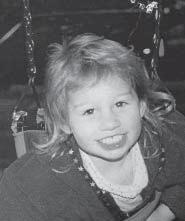
15 year old Erin Rouillard has been an athlete since she was born. Coming in as a freshman, she was new to the special education program at Oyster River High School. She quickly found a home here through the athletic department, her special education classroom, and teacher Donna DePerri. “I’ve only known Erin for about a month; she’s really kind hearted. She wants to make friends and she wants to learn and work hard,” explains Deperri.
Since she was eight, Erin has been competing in the Special Olympics. “She wanted to start in first grade but they wouldn’t let her,” said Erin’s mother Beth Rouillard. “It bugged me,” Erin stated. Now she competes in a total of five different Special Olympic sports: ski racing (her favorite), basketball, soccer, track and bowling. “At Oyster River I play basketball (both offence and defense), and soccer. I actually have a varsity letter upstairs in my room,” she excitedly told me.


When we ventured up to her room to see the famed letter, I was amazed to see how many metals she had actually won. “There are probably 30 metals up there,” said Beth. “She’s got a ton of ribbons up there too, because if you don’t place top three then you get a ribbon. If it’s not thirty then it must be close.” And it was close. Hanging on her wall was a wooden model of the state of New Hampshire. The inside of the model was filled with dozens of her gold, silver and
“Ski racing gets my mind off of everything else and on the slopes,” Erin said when asked about which her favorite sport was. “For ski racing I actually compete against older kids, and I beat the older kids,” she said proudly. “They go by levels not by age,’ said Beth. “You always ski with the big kids because you’ve always skied better than most people,” Beth said looking at Erin. “When she was born, my husband said, ‘I don’t care what’s wrong with her,’” and in synchronization like the story had been told millions of times Beth and Erin said together, “‘slap those puppies on her feet and let her go.’” And that’s what they did.
Mark Rouillard, Erin’s father, has been the Special Olympics ski racing coach since Erin has been on the team. “My dad always says turn right before the gate until the next target, make sure you stay down, and go really fast down the course to get the right time,” says Erin. “Don’t do any snow plows; don’t kick the snow out from the back of your skis,” Beth reminded. A few Saturdays ago while racing at Gunstock, she cut her time by 7 seconds. “A couple of weeks ago she was at 44 seconds, now she’s at 37. So she’s cut off a lot of time,” Beth finished.
ently than most high school students, she is still a top rate student and takes pride in her work and how she progresses as a student. “The sports are a really big motivation for her,” DiPerri continues. “It keeps her feeling positive about school and it keeps her social, Erin is always really proud about when she does well. “Truth is, I love it when she gets really excited about things; she makes me smile every day.”
- Donna DiPerri
“I think that she does a great job balancing school and sports,” said DiPerri. Even though her academics are scheduled differ-
Jokingly I asked, ‘Hey Erin, you’re pretty good at sports aren’t you?’ She replied with a nonchalant shoulder shrug and a “Yah,” which was very Erin. When asked how she had the opportunities to get so good at all of her sports, her mother Beth replied, “I’ve never told her no. She can do anything she wants to try. Most importantly,” Beth said. “I love my kid.”
Issue Four April 8, 2014 26
Sports Visit us online at mornewspaper.com for more exclusive articles!
“Since she’s so super social and friendly she really cares about her class mates [...] she looks out for them and she’s the helper in the classroom.”
Erin proudly showing off her trophy case.
Erin Rouillard sporting her Unified Athletics jacket.
New Coach, New Hope
ORHS Softball Team Strives for a Win
According to Fosters, it has been seven years since the Oyster River varsity softball team has won a game.
coach.
“This year will definitely be different. He’s more intense, but that’s what we need”.
James Tuliano Guest Sports Writer

The sport of softball is a very competitive one. Compared to other schools in the state, Oyster River’s softball team is not the strongest. In fact, the last time Oyster River won a single game was in 2007.
There is some hope for this season, however. A brand new coach has been hired to provide some much needed guidance and discipline for the team. Glen Miller, who has been coaching softball for 4 years, hopes to lead the team to success.
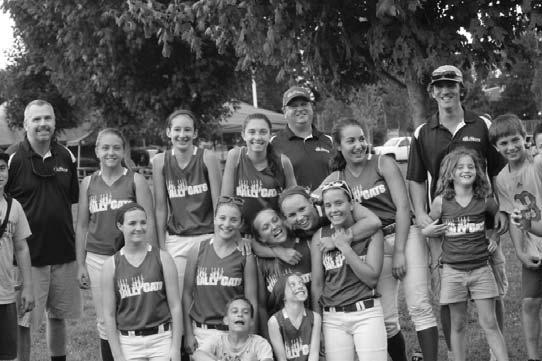
“Despite difficult times in recent years, I believe in the ORHS Softball team and each of the players on the team.” says Miller.
Miller is the co-founder of NH RallyCats, an American Softball Association (ASA) softball team. He also coached through the Dover Youth Softball League for some years. In addition, Miller coached basketball for six years, adding to his coaching resume.
“Ultimately, a coach’s first responsibility is to give his team a chance to be successful. I think that I bring an approach that will help this team to achieve success. I will emphasize a strong work ethic for our team, through preparation, highly focused practices that emphasize skill development, team work, respect for each other and our opponents, and sportsmanship,” states Miller. “These are the qualities associated with successful teams”.
China Wong, a 4-year varsity player for the ORHS softball team, expresses her optimism about this season due to the new
Wong has been playing softball since 7th grade. She really likes the sport and believes that the team has a chance to make it into the playoffs this year.
“He seems like a really good coach. He knows a lot about the game, his daughter is on the team and he is really committed and passionate about the team,” says Wong.
The daughter of the coach and sophomore at ORHS, Caitlyn Miller, has played softball since she was 10 years old. She believes her dad has what it takes to steer the team in the right direction.
founded. “This year will definitley be different. He’s more intense, but that is what we need.”
“This new coach will help us gain our confidence back and get back into the swing of things,” says Sullivan.
- China Wong
“I feel like last year we weren’t ever pushed to be the best, but my dad has no problem with pushing people and keeping the girls on track,” says Caitlyn Miller. “He is very dedicated with the team and his passion will help us keep focus on winning and playing competitively.”
This is not the first time Caitlyn Miller had her father as her softball coach. When she played ASA softball during the summer, her father led the team into success. Because of his coaching on her ASA team, Caitlyn Miller feels that Miller carries the “intensity the team needs”.
Lauren Sullivan, who has been playing the sport for 11 years and is a senior at Oyster River High School, is also optimistic for the new coach.
Sullivan has been playing on varsity since freshmen year. She believes, like Wong and Caitlyn Miller, that this year will be different. “I am sure there will be a lot of changes at the plate this year as far as hitting goes, thanks to the new coach,” explains Sullivan.
The boy’s baseball team also believes that the future is bright with the softball team.
“As long as [the new coach] puts in the effort and shows passion for the game and wants to win, they can definitely win a game,” explains senior Andrew Wolcott, a 4-year varsity player for Oyster River’s Baseball team. “[But] As far as a chance at the state title, there is no chance at the moment,” Wolcott adds.
Only time will tell if the softball team turns a new leaf this season. Softball’s home opener is Wednesday April 16th at 4 pm versus Milford High School.


Follow Us on Twitter @MORnewspaper for more content.

Issue Four April 8, 2014 27 Sports
“Despite difficult times in recent years, I believe in the ORHS Softball team and each of the players on the team.”
- Glen Miller
The NH RallyCats, the American Softball Association team that Glen Miller
Congrats to the Robotics team, check out the artilce online! Are you looking for advice for your upperclassmen years? Check out this article online! Learn about educational opportunities with the CTE program online!
A Different Kind of Field Day Big Changes for the ORHS Athletic Fields
Oyster River High School hopes to reconstruct the sports fields behind the school by 2015. The new plan consists of adding a turf field and an outdoor track including a shot put and high jump area all surrounded by a fence and gate. A baseball field, softball field, field hockey field and junior varsity soccer field will also remain in the plans.

 Sports Editor
Sports Editor
“The process began over fifteen years ago when Friends of Oyster River Track Athletic began its fundraising efforts,” Athletic Director Corey Parker explains. “This renovation is long overdue and we are excited to have new fields because at this point, [the current fields] are frankly not up to par.”
On March 19th of this year, the school board agreed to provide $40,000 to cover the costs for the finalization of the project including getting final plans drawn and professionals to come in and make sure the grounds are suitable for the renovation. The total cost of the renovations is estimated to be about 2.4 million dollars.
Senior runner Jenny Mistretta believes that having our own track “will help with practices.. We won’t have to go to the University of New Hampshire (UNH)’s track and constantly rely on them.” In the past, due to a lack of the track, the Oyster River track teams travel to the UNH indoor and outdoor track to practice. Mistretta went on to explain that this track will “give us a sense of camaraderie and a home course like we do for cross country. In the past our track teams have been so dominant so we
The proposed field plan.
deserve this track,” Mistretta adds.
Varsity boys soccer player and ORHS junior Gunner Tucker explains that “the current field conditions are not what a team would want it to be; there could be some improvement.” Only a couple of the teams that the boys face during regular season have turf fields at home. “Playing on turf makes the game a lot faster than on grass,” Tucker explains. “Although [teams with a turf field] have an advantage at home games because they practice on them more, they play the majority of their away games on grass which provides them with a slight disadvantage.”
grass doesn’t grow, and the goalie box is just a mud pit.”

“This renovation is long overdue and we are excited to have new fields because at this point, [the current fields] are frankly not up to par.”
-Corey Parker
Varsity girls soccer player and ORHS Junior Desiree LaPanne agrees with Tucker, explaining that “the adjustment from turf to grass can be a bit rough especially if you’re used to playing on turf.” Although the switch to turf may be challenging at first, LaPanne sees benefits of the renovation saying that “with our current field we have big patches that
The baseball field will also be seeing a change. In the proposed plan, the infield will be rotated and placed in what now is left field. Baseball player Wade Belanger hopes that the new field will be a great improvement. One drawback to the current field is that at sunset, the sun is right in the pitchers’ eyes. “Sometimes the sun can be so bad that pitchers miss the throw from the catcher... typically players from other schools,” explains Belanger. “Now the sun will be beyond left field so hopefully no one will be affected by the sunset,” Belanger adds.
Although construction would not begin until 2015, there is much optimism from administration about the project starting sooner than later. One downfall to this is that the physical education classes rely on the use of the fields for the majority of the season. “Where would we go? We couldn’t walk to the middle school because they are using their fields... And these high school fields will be a construction site,” explains Physical Education teacher Don Maynard. Although there may be difficulties during renovations, Maynard sees many benefits in the new plans. “The track would allow us a walking unit option and possibly new units involving track and field events,” Maynard explains. “It might even open up the possibility of having more units outside in the winter because snow melts off the turf and track a lot quicker than grass,” he adds.
Follow Us on Twitter @MORnewspaper for more content.
Issue Four April 8, 2014 28 Sports
Alex Morrell
The current field layout behind Oyster Rver High School. (Photo Credit: Google Maps)
Victory Lane
The ORHS Boys Swim Team Laps the Competition
The pool area was filled with the screams and cheers of teammates, coaches, and hysterical parents. Eardrums had nearly burst by the time Oyster River’s Matt Jones outouched the Souhegan team by three tenths of a second in the 400 yard freestyle relay. Finally, the crowd could breathe sigh of relief (or defeat), the winner at long last determined. That is, if they hadn’t looked at the scoreboard the entire meet.
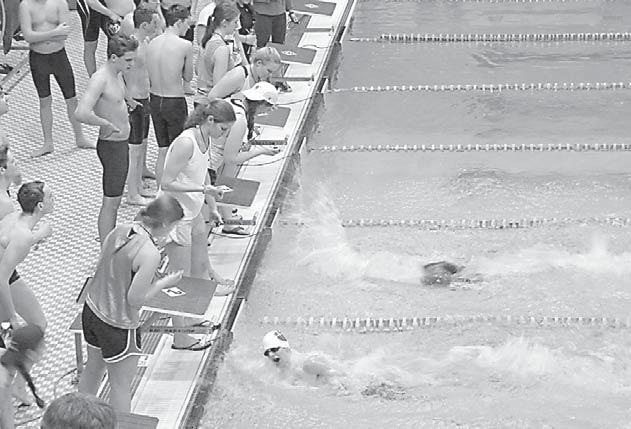


On February 15th, the Oyster River boys and girls swim teams each won the NHIAA Swimming and Diving state titles. For the boys, this was their 6th win in 7 seasons, while the girls won their second consecutive championship, and 4th in the past 7 seasons. While the wins were more or less expected, the margins of victory were a surprise to many. Led by Jones, Drew Thibault, Chris Rouleau, Brian Stevens, Forrest Spinney, Sam Lippmann, and Jonathan (Jag) Guerrette, the boys team cruised to a whopping 77.5 point victory over St. Thomas, never looking behind.
Jones, who swam the 100 yard butterfly, 100 meter backstroke, as well as the backstroke leg of the 200 yard medley relay and the anchor of the 400 yard free relay, credits a lot of the overall success to the influx of talented freshman swimmers. “I think what really helped win states was the team as a whole. Everyone worked hard in training and in races. We [also] have Bill [Reeves] and Laura [Fant], who are great coaches,” said Jones.
Jubilation was everywhere on the pool deck, as the two teams could finally celebrate their victories. Ever-serious head coach Bill Reeves shed some light on the situation: “We knew going into the season that it would be a challenge, but if everybody on the team really came together, we could get enough people qualified for the state meet. And if we had enough people qualified and prepared, then we might have enough to win it all.”
For someone who’s so used to winning, Reeves was still in awe of what the teams accomplished this year. “So when it came down to the final meet, it was probably one of the most incredible years we’ve ever had in terms of improvement and moving up place-wise. On the boys side, [the key was] definitely having numbers. We had ten boys qualify this year, no other team had that
many. The big piece was that everybody [for the most part] moved up in their placing and scored higher than anticipated. We put multiple people in scoring positions,” he says.
After so many years of “being in the mix” to win it all, it may at first glance appear that the ORHS swim team has become a welloiled, brutally efficient, shark-like machine, churning out championship after championship. “Can’t say there weren’t lots of bumps along the way, it wasn’t always easy to keep training. The weather definitely didn’t help us, interrupted the training season quite a bit,” says Reeves. A lack of divers was a constant issue for both teams. In the championship meet, Oyster River didn’t send out a single male diver to compete (It didn’t matter though; not a single team was able to put a male diver on the board). “We were [also] trying to put a few [more] divers on the board and that never materialized, so we had to focus on what we had, and not what we didn’t have.”
Emily Howard, a senior at ORHS, won the diving title for the girls team. “It was really rewarding to win the diving title my senior year, I’ve been on the team all four years and have worked really hard. I have definitely had my fair share of struggles so it
was nice to see that my hard work paid off,” said Howard. Oyster River snagged the top four places in the diving competition, without a shadow of a doubt of anything less. The only four competitors entered in the meet were from Oyster River, leading to the inevitable sweep. “It was interesting competing against only my teammates because we all definitely supported each other, but at the same time were all competing for first
place. It was more of a friendly competition,” Howard elaborated.
The competition had a more “relaxed vibe” in Howard’s eyes, but if anything it made the nerves even worse. “Because I was so comfortable diving in front of my teammates, I was afraid I’d be too relaxed. It didn’t really seem like a major meet because (Continued on page 32)
Issue Four April 8, 2014 29 Sports Visit us online at mornewspaper.com for more exclusive articles!
“When it came down to the final meet, it was probably one of the most incredible years we’ve ever had in terms of improvement and moving up place-wise.”
-Bill Reeves
Trevor Oakes Guest Sports Writer
The girls and boys swim teams pose with their new hardware.
The ORHS boys celebrate a victory in the 400 yard freestlyle relay as Matt Jones (bottom lane) reaches the wall three tenths of a second before Souhegan.
Don’t Let It Get To Your Head Football at ORHS
In a country where the NFL Superbowl broke the record for most watched TV event ever, you could say football is a pretty big deal. Schools across the nation compete at the high school and collegiate level, all to funnel into the narrow chute of professional football glory. These select few athletes compete for on average 3.3 years before retiring. Then the trauma starts to hit. It turns out that 10 years of getting smacked in the head consistently isn’t the best thing you can do to your body.

Retired general surgeon, and Dover resident, Paul Butler has done his research. After playing collegiate football at Amherst College for 4 years Butler became a doctor. After a successful career, Butler began to look at the sport he loved so much in his home town of Dover, NH. And, after a lengthy bout of research Butler joined the Dover school board and tried to get rid of the football program. But why exactly?
“The average lineman receives 1,0001,500 hard hits to the head in a season” says Butler. This type of hit not only hurts you short term, but it can really hurt you long term. Chronic Traumatic Encephalopathy (CTE) is a disease found in players across the country. CTE leads to dementia and depression and often ends in the suicide of football players. CTE’s cause is hard repeated hits to the head; something football linemen are well accustomed to.
“It’s not healthy for a developing brain to get whacked around,” says Butler. Even if you don’t get a concussion a football player can still develop CTE. Butler cites the suicide of Owen Thomas as the perfect example of CTE. Thomas, the former captain of the University of Pennsylvania football team, had no diagnosed concussions in his 11 years of playing. After a post mortem autopsy of Thomas, he was found to have CTE. Although this may not be the direct underlying cause it is a quite prominent factor.
Butler says the innate problem of football is that “getting your head hit is part of the game.” With soccer, lacrosse, or even hockey you can play an entire game without anyone getting hit. This just isn’t true with football. Each snapback is followed by 11 heads whacking into each other. This happens roughly 60-70 times every game.
ORHS Athletic Trainer Mike Feld agrees with this viewpoint saying, “pretty much every play in football ends with a hard col-
lision, which is unlike any other sport… Yes, hockey and lacrosse are also high contact sports where violent collisions do occur, but that is not necessarily the goal of those sports, to knock down the person with the ball/puck.” Despite these facts Feld is not entirely against football, and he’s not alone at Oyster River.

Junior Brendan McKenna has been playing football since age seven and currently plays for the Seacoast Titans. McKenna would love to see football at ORHS saying “Oyster River not having a team makes it feel as though our school is missing something; most school’s football team is something the whole school can rally behind.” Culturally McKenna does have a point, he continues saying, “a school football team could bring us closer not just on the field but as a school… Football is one of those traditions throughout America. You watch a movie in a high school setting you are guaranteed to see a football team.”
Jumping back to Dover, I spoke with high school football players Isiah Bickham and Brendan Madsen to get the inside scoop on football culture. “It has a huge effect, everyone knows who the players are and [there is] non-stop talk about the season,” says Bickham. “Having football at Dover is great… I think it brings our school closer together. Coming out to the Friday night games shows how much they support our team,” adds Madsen.
Not only is it good for the com-

munity, but Bickham would argue it extends further than that. “I believe it is good for the school; football teaches hard work and dedication, qualities young people lack these days.” All of these things might be true, but how is it so different from any other sport Oyster River offers?
Feld shares his thoughts on bringing football to Oyster River. “I think there can be great benefits to having a football team, but not necessarily more than in any other sport. People will make the argument that ‘we need a football team because it teaches you how to be a man, and teaches you about teamwork, working towards a common goal, time management..’ [but] the same can be said for soccer, hockey, basketball, track, all sports really,” explains Feld. So what does football offer other than a more di-
Issue Four April 8, 2014 30 Sports Visit us online at mornewspaper.com for more exclusive articles!
“The average lineman receives 1,000-1,500 hard hits to the head in a season.”
-Paul Butler
Matthew Segil Editor-in-Chief
Brendan Mckenna poses with his football. (Photo Credit: Lynn Stevens)
Seacoast Titans break from a huddle. (Photo Credit: Lynn Stevens)
rect venue for aggression, and Friday night games?
At the very least it offers another sport for Oyster River students to play, but is that even a realistic goal? I spoke with Athletic Director Corey Parker to find out the details on why ORHS doesn’t have a football team. “It was facilities, funding and title 9,” says Parker. Facilities meaning that there is no viable place for ORHS to play football even if we did have a team. Talk of playing at Woodridge Field was vetoed by the town of Durham and UNH never gave direct consent to use their playing field.
Aside from facilities you have to recognize that as Feld says, “football is not a sport that you can start cheap.” Even if you did have a field to play on, paying for time, coaching, equipment, and youth programs costs a lot of money. Unlike Dover High School, which has been playing football for over a century, ORHS would be new to the game, and without proper funding, is at a severe disadvantage.

Out of all the problems, Title 9 issues pose the greatest threat. Title 9 is a portion of the US Education Amendments that states “No person in the United States shall, on the basis of sex, be excluded from participation in, be denied the benefits of, or be subjected to discrimination under any education program or activity receiving federal financial assistance.” This means that as the school is a federally funded institution football would be a school funded sport. This implies football would have to be equally open to both genders.
“It would be a co-ed sport,” says Parker. The problem is not many females in the US, let alone New Hampshire, play football. “We’ve never seen a female play before but if they worked hard I’m sure it’d be possible,” says Bickham. To make football possible at ORHS we would have to create an equal opportunity sport for girls, which at most schools is field hockey. Even if we could make girl’s field hockey as big as a potential football program, we would still be at risk for a title 9 lawsuit. Seeing as our hockey program just faced a title 9 issue, it’s understandable that ORHS wants to take a step back from any legal issues.
That being said if we were to assume all of these factors were dealt with Feld would not be against having a team. “I would not be opposed to a football program at ORHS, IF it was developed the right way. I don’t think that it is possible, or safe, to just throw a team out there on the field...you must have proper equipment, proper practice facilities, proper coaching. You need players who understand that football isn’t just about hitting someone as hard as you can and making
a highlight film.
There are proper techniques that need to be learned to avoid serious, potentially life threatening injuries.”
Parker agrees with Feld saying “I think the potential is there, but I think that our feeder, and youth programs would have to grow.” With all these hypotheticals flying around, let’s get grounded for a moment. The reality is Oyster River probably will not be getting a football program any time soon, assuming we don’t magically get a new field, an extremely generous endowment, and some title 9 wiggle room. But even if we could have a team, I’m not sure I would want one.
What it all comes down to is, does the risk of head injury outweigh the benefits of the sport. After speaking with Butler, I would absolutely say yes. Hitting is such an important part of the football game that you can’t avoid the risk associated with it. These hits invariably lead to some sort of injury be it CTE or a concussion.
Feld, who has dealt with 10 concussions so far this school year “spread out between boys/girls soccer, boys/girls basketball, and boys/girls hockey,” is aware of this threat. Feld continues saying “statically football is the sport where we see the most head injuries (a close 2nd is girls soccer) so yes, I would definitely expect to see more head injuries in football than other sports at ORHS. Pretty much every play ends with a hard collision.”
In my mind, there is just too much risk associated with the sport. Feld gives me a brief walk through on what a concussion does to a student’s school life. “When you get a concussion, your brain basically “short circuits”. It can take a while before your brain starts functioning normally again. Some people have no problems in this area, while others may have a hard time focusing,
paying attention, formulating thoughts, and following simple instructions.” This type of academic inhibition can affect grades, test scores, and potentially even college interviews.
When only 3-4% of high school football players make it to the college circuit I think that could be a problem. Is it really worth hurting your chances of academic success for the team building, exercise, and community that other, less dangerous sports, offer. Senior Seamus Potter thinks that knowing what you’re getting into is very important if you do want to play. “Before someone gets accepted onto the team they should have to read, and know, the statistics. If you’re going to be playing football you have to be willing to accept the risks.”
“I love playing football and it’s a sport that I would definitely play if I had the opportunity to do it,” says Potter. Ultimately it’s a personal decision, but like Potter I think potential athletes should be doing research, and know the statistics before they jump into the game. Parker thinks the decision to play should rest on individual family’s shoulders. The truth is if I were a dad right now I just don’t think I would want my kids play. Despite all the good things football brings to the table the drawbacks outweigh the benefits as far as I’m concerned. Ultimately the decision is yours, but I would advise you know what you’re getting into before you join the huddle.
Follow Us on Twitter @MORnewspaper for more content.
Issue Four April 8, 2014 31
Sports
Football players run for a pass at the UNH field. (Photo Credit: Lynn Stevens)
“Before someone gets accepted onto the team they should have to read, and know, the statistics. If you’re going to be playing football you have to be willing to accept the risks.”
-Seamus Potter
Lane,
“Because I was so comfortable diving in front of my teammates, I was afraid I’d be too relaxed. It didn’t really seem like a major meet because it was only us diving. Also, I think it took some of the pressure away because our team would take first, second, third, and fourth... and any one of us could have taken first so that [ at least] made it competitive,” she continued.
The nerves had gotten to Jones early on the season too, but by the state meet he was able to conquer any feeling of doubt. “I think that the hardest part of this season was getting over the nerves you get before races. I overcame this by relaxing myself and trying my best to get in the zone before my races and just have fun with it,” he says. Good thing, too: By meet’s end, Jones had finished first in both of his individual races.
Thibault, a senior who was a member of two other championship teams in 2011 and 2012, thought this win may have been the sweetest. “It was exciting to win again, as you might expect. Though this one was more exciting and enjoyable than previous two from 2011 and 2012, because we weren’t expected to win this year. We were expected to take a run at the title, but I think most
people believed that St. Thomas was going to win.” But that wasn’t the only reason he felt this year was special. “It was different. In the past years I have always had people ahead of me, in terms of age, to base training, racing, etc. off of. But this year being a senior those were things that fell on me. It was also nice to win one last championship before I leave,” Thibault continues.
“I think the credit for the win can really just go to the team. Everyone who qualified for states moved up or held their place in their event. This was huge, because we either got the amount of points we were expected to get, or in most cases we got more, says Thibault. Thibault embraced his leadership role on the team this year, and placed 5th and 6thin the 500 and 200 yard freestyle, respectively.
As a freshman, Lippmann got to experience his first championship meet in the best way possible. “It feels really good however I think sets the bar really high for the next 3 years. It has set a big precedent for the next couple years, however I really have faith in the team’s ability to do well.” It took a little getting used to for Lippmann, especially all the pushups and ab workouts. “Dry lands,
the first few weeks, were extremely painful but I think that they did pay off in the end.” So next time a swimmer complains about extra crunches or 5 A.M. practice, it might do them good to remember there’s a high chance it will all pay off.
Looking forward, the team is (so far) optimistic about repeating, especially on the girl’s side, as they are only losing one senior. For the boys, there will be a few big holes to fill, and a diver wouldn’t hurt either. “On the guys side we are losing three great team members that we will need to compensate for. I think the team will still be very strong next year, and it helps that we have a lot of good 8th graders coming in [to swim for us],” explains Lippmann.
“Next year’s team will struggle to replace the seniors who are graduating. Every senior was important to the team; a few were key pieces on the relays,” says Reeves. “We’re going to need to make sure people improve, if people don’t improve, or don’t do enough in the offseason, or don’t come back, we could have some issues.” Given the impressive history of the team under Reeves, it doesn’t seem like this will be difficult to manage.
Boys Lacrosse Has A Bahl A New Lacrosse Coach for 2014
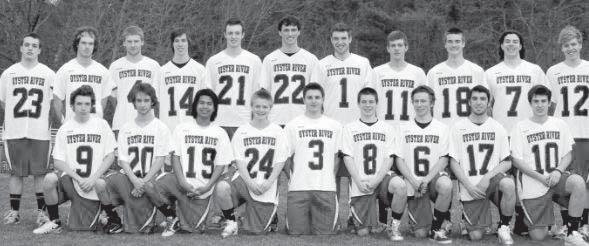
“He’s somewhat of a lacrosse legend,” says senior Alex Eustace. Vince Bahl has been in the district for many years, as both a parent of an Oyster River alumnus and also as a coach. For the 2014 season, Bahl has been named the new boy’s lacrosse coach. With years of coaching experience, Bahl is the perfect fit for the boy’s lacrosse team. “I’ve been to a couple camps that Vince ran, and I was pretty surprised at his sensibility towards the players,” said lacrosse player and ORHS junior

“Most coaches I’ve had just want to win everything all the time right from the start which really doesn’t work with a team of kids who haven’t played together very much.
Vince focuses on refinement in the players a lot more and understands the team won’t get better unless the team gets better as a whole,” Albert adds.
Being a part of the Durham sports community is an honor to some, especially Bahl. “He’s worked with ORYA a lot, given them a lot of his time, he’s really made ORYA what it is today,” says Oyster River Physical
Education teacher

Don Maynard. “There’s more to coaching than just knowing the game, and Bahl’s got that down.”
After Bahl’s son Alexander graduated ORHS in 2011, Bahl didn’t leave Oyster River hanging.
“I’ve been to a couple camps that Vince ran, and I was pretty surprised at his sensibility towards the players.”
-Aaron Albert
“After Xander graduated, Vince stuck around, and still is around, to help with coaching when it was needed. He’s just a great guy, both with coaching and keeping in touch with the school,” adds Maynard.
Needless to say, Oyster River is excited to welcome Vince Bahl as the new varsity boy’s lacrosse coach.
Issue Four April 8, 2014 32
Visit us online at mornewspaper.com for more exclusive articles!
Sports
Aaron Albert.
and coach
Gabi Meyerson Guest Sports Writer
The 2013 Boys Varsity Lacrosse team.
The Oyster River Lacrosse logo.
Victory
Continued From Page 29


















 Moore News Editor
Moore News Editor




















 Editor-In-Chief
Editor-In-Chief





























 Sports Editor
Sports Editor








